
On January 4 this year I got my American friend Joseph (Joe)Susi and His Kenyan wife Linet visiting from Kenya. I picked them up at the bus terminal in Arusha and we went to Usa River to stock up and exchange some USD into local currency. We went to my home relaxed and had a lovely dinner. Joe have birded quite a lot in Kenya and also Uganda so he had an impressive East Africa list, but there were quite a few lifers for him to still get. We had some relaxed birding in the garden and registered the following species late afternoon: Green-winged Pytilia, Red-chested Cuckoo, Helmeted Guineafowl, Variable Sunbird, Sombre Greenbul, Grey-backed Camaroptera, Tropical Boubou, Red-billed Firefinch and Ring-necked Dove.
Day 1, Friday, January 05: Kiligolf
As normal we started the first day birding my garden and Kiligolf. Unfortunately the weather were not on our side, so we had breakfast and only went out around 10:00. Here are some of the species we registered on Kiligolf before lunch: Nubian Woodpecker, Red-cheeked Cordon-bleu, Vitelline Masked Weaver, Long-tailed Fiscal, Hadada Ibis, Magpie Shrike, Rattling Cisticola, Klaas´s Cuckoo, Crested Francolin, Red-faced Cisticola, African Grey Flycatcher, Purple Grenadier, Brown-crowned Tchagra, Violet-backed Starling, Diederik Cuckoo, Yellow Bishop, Bare-eyed Thrush, Red-eyed Dove, Bronze Mannikin, Speckled Mousebird, Brown-breasted Barbet, White-browed Coucal, Superb Starling, Yellow-breasted Apalis, Orange-breasted Bushshrike, Spectackled Weaver, Tawny-flanked Prinia, Giant Kingfisher, Helmeted Guineafowl, Brown-hooded Kingfisher, Slate-coloured Boubou, Scarce Swift, Thick-billed Weaver, White-browed Scrub Robin, Crimson-rumped Waxbill, Red-throated Twinspot, Variable Sunbird, Thrush Nightingale, Sombre Greenbul, Pale White-eye, Hamerkop, Common Sandpiper, Three-banded Plover and Magpie Shrike. Not a bad count at all even for a late start. We came back to the house and had lunch, relaxed and were out birding again around 16:00. This time we birded the upper part of Kiligolf. Here are some of the new species we observed for the day: White-winged Widowbird, Pearl-spotted Owlet, African Grey Hornbill, Lesser Striped Swallow, Lesser Masked Weaver, Malachite Kingfisher, Pin-tailed Whydah, African Pied Wagtail, Little Swift, Chinspot Batis, African Paradise Flycatcher, Reichenow´s Seed-eater, Red-headed Weaver, Steel-blue Whydah, White-faced Whistling Duck and African Palm Swift.
We were home around 18:30, freshened up had a nice dinner and retired early to bed.
Some pictures from Day 1

Bare-eyed Thrush, Turdus tephronotus, Endemic to NE Africa
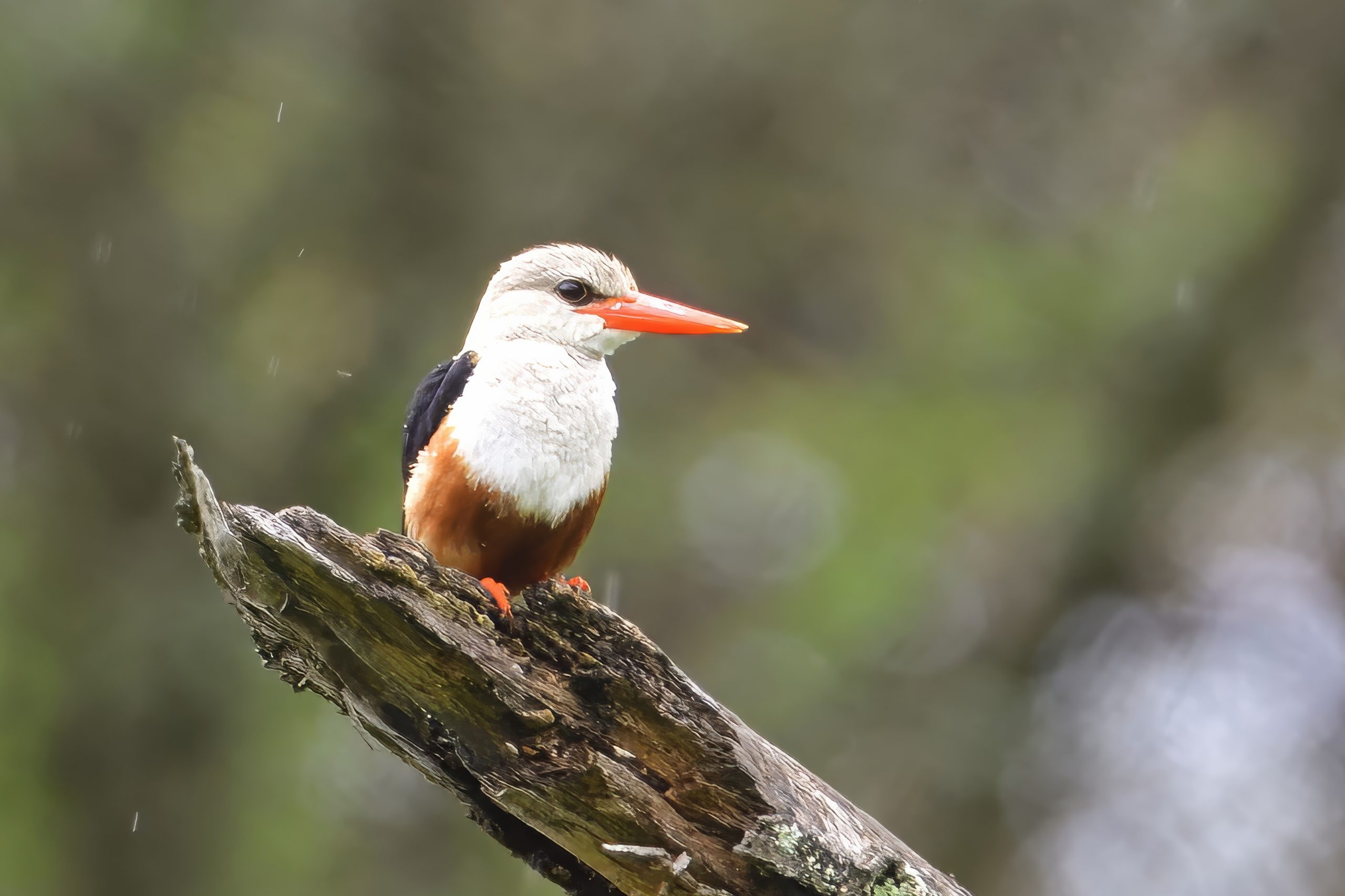
Grey-headed Kingfisher, Halcyon leucocephala

Red-faced Cisticola, Cisticola erythrops

Variable Sunbird, Cinnyris venestus
Day 2, Saturday, January 6, 2024: Masai Steppes including Shambalaya Dam.
Normally we do Lark Plains on day 2, but since there is a Masai Market day on Oldonyo Sambu every Saturday, we changed the schedule a little. We drove from my house to Mererani and found a House Crow (unfortunately) there. We continued to where the tar stops and started birding from there. Here are some of the birds we registered before breakfast: Pied Crow, Little Bee-eater, Red-and-yellow Barbet, House Sparrow, Namaqua Dove, Red-billed Quelea, White-headed Mousebird, Parrot-billed Sparrow, Grey Wren-Warbler, Beautiful Sunbird, Banded Parisoma, Fork-tailed Drongo, Yellow-bellied Eremomela, White-bellied Canary, Black-throated Barbet, Hunter´s Sunbird, Brubru, Blue-capped Cordon-bleu, Eastern Violet-backed Sunbird, Red-bellied Parrot, Red-tailed Shrike, Barn Swallow, White-bellied Go-away-bird, Straw-tailed Whydah, Pink-breasted Lark, Common Rock Thrush, Great Spotted Cuckoo, Blue-naped Mousebird, Northern White-crowned Shrike, Capped Wheatear, Red-rumped Swallow, Blue-cheeked Bee-eater, Tsavo Sunbird, Red-fronted Prinia, Rosy-patched Bushshrike, Yellow-collared Lovebird, Chestnut Weaver, Western Yellow Wagtail, Cardinal Woodpecker and Spur-winged Lapwing. We had now reached our breakfast spot and enjoyed a nice packed breakfast. From there we took a little walk, but it were very quiet so we only added Greater Honeyguide, Emerald-spotted Wood Dove, Buff-crested Bustard and Black-necked Weaver. Both Joe and Linet had Black-capped Social Weaver, so we did not bother to go to the nearest nesting colony, but headed towards Shambalaya Dam. Unfortunately the water level of the dam were too high to do my normal route, so we dipped on a lot of birds. The few we picked up were Lilac-breasted Roller, Laughing Dove, Common Moorhen, African Jacana, Eastern Chanting Goshawk, Grey Heron, Knob-billed Duck, African Sacred Ibis, Western Cattle Egret, Blacksmith Lapwing, a huge flock of circling White Storks and Black-headed Heron. It was not a particular good day on the Masai steppes we dipped on 3 key birds: Scaly Chatterer, Pringle´s Puffback and Somali Bunting. All of those 3 we had other possibilities to get. We were still early, so we drove via the airport and went up to check up the wetlands around Sakila Hills. Here again, the water level were very high (has not been enough water there for a couple of years). We managed to pick up Little Grebe, White-backed Duck, Great Egret, Black Crake, African Marsh Harrier, African Swamphen, Spur-winged Goose and on the way down to the main road Lizard Buzzard, Rock Dove and Augur Buzzard.
We returned home quite early that day and relaxed with some garden birding before we freshened up had dinner and retired early to bed.
Some pictures from Day 2:
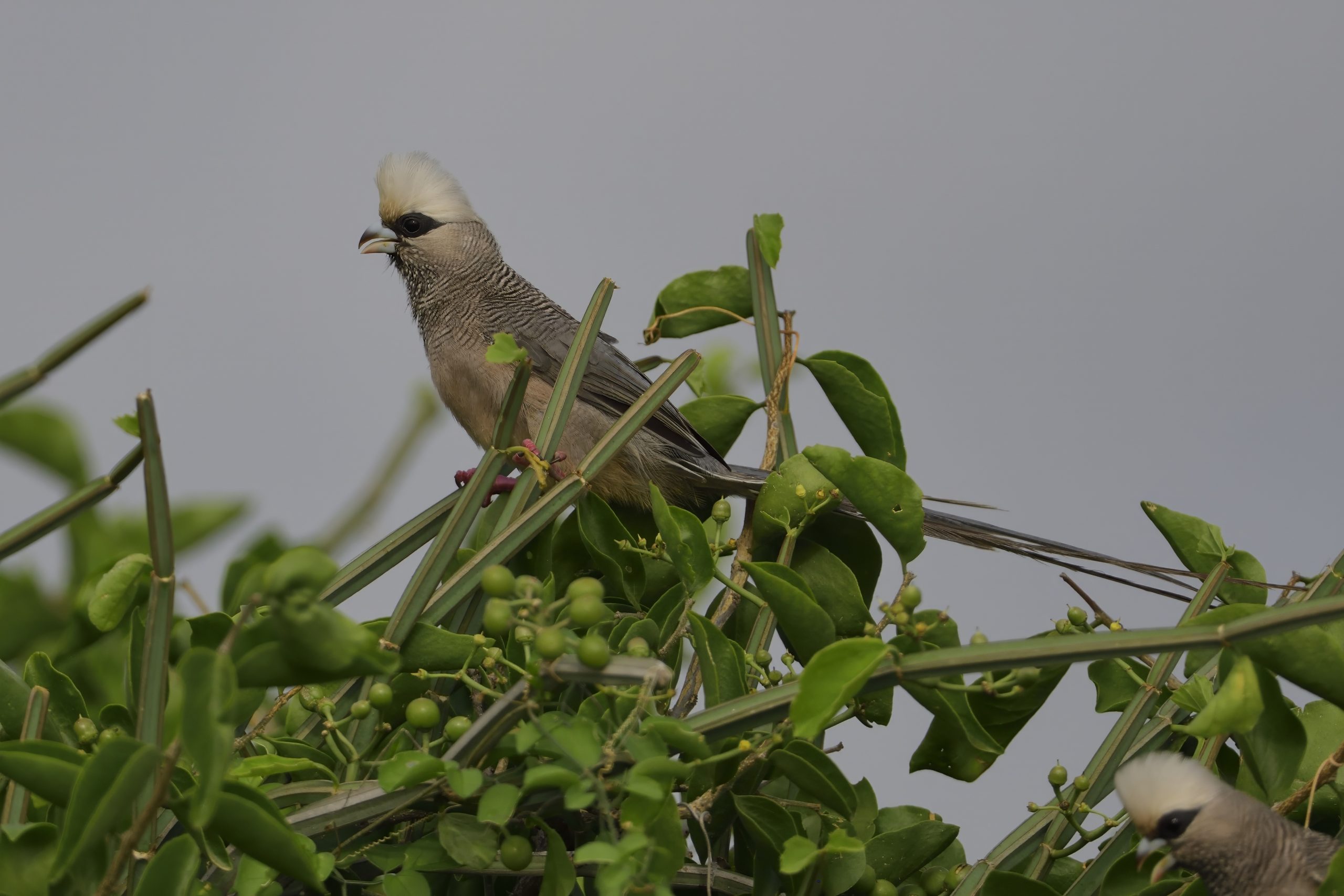
White-headed Mousebird, Colius leucococephalus, Endemic to NE Africa

White-browed Scrub Robin, Cercotrichas leucophrys
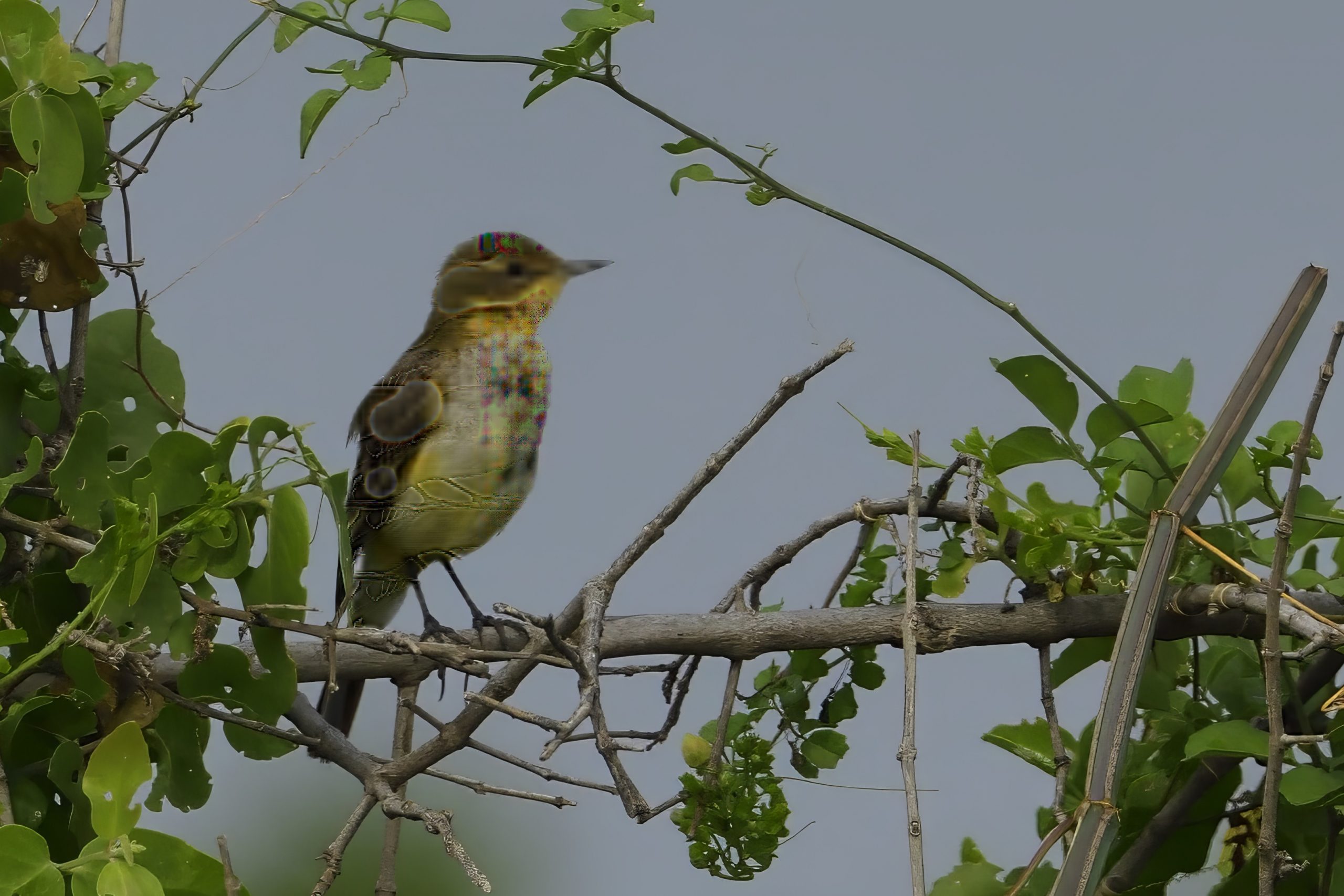
Western Yellow Wagtail, Motacilla flava

Hunter´s Sunbird, Chalcomitra hunteri, Endemic to NE Africa
Day 3, Sunday January 7: Lark Plains, Oldonyo Sambu and Longijave
Wer headed first to the Lark Plains. Stopped at the turn off and started birding slowly towards the spot were the Masai where waiting for us. Here are some of the species we saw before we connected with the Beesley´s Lark: Foxy Lark, Taita Fiscal, Crowned Lapwing, Capped Wheatear, Kenya Sparrow, Chestnut-bellied Sandgrouse, Marico Sunbird, Red-capped Lark, Short-tailed Lark, Tawny Eagle, Athi Short-toed Lark, Pygmy Falcon and Beesley´s Lark. We walked back to the car and drove slowly towards the dry acacia forest near the masai bomas. Here are some of the birds we saw: Red-fronted Prinia, Fischer´s Sparrow-Lark, Northern and Isabelline Wheatear, Temminck´s Courser, Kori Bustard, White-headed Buffalo Weaver, Southern Grosbeak Canary and Grey-capped Social Weaver. We stopped and had our packed breakfast, then we birded around the dry Acacia Woodland area. Both Joe and Linet had most of the birds from before, so we did not spend too much time in the area. Here are some birds we registered: Red-throated Tit, Hildebrandt´s Starling, Black Cuckoo, African Pipit and Ashy Cisticola. We finished at Lark Plains and drove to Oldonyo Sambu. We really only had one target here: Little Rock Thrush. We found both a juvenile and an adult. The only other new bird for the day were a Rock Martin. We continued towards Lengijave. We picked up a Common Kestrel on the way. After the turn off we started getting new birds for the day: White-fronted Bee-eater, Horus Swift, Baglafecht Weaver, Schalow´s (Abyssinian) Wheatear, African Stonechat, Singing Cisticola, Lyne´s Cisticola, Yellow-crowned Canary, Long-billed Pipit and Streaky Seedeater at our lunch spot. On the way down to the main road, we added Red-and Yellow Barbet, Dusky Turtle Dove, Speckled Pigeon and on the way home Yellow-billed Kite, Red-winged Starling, Speke´s Weaver and Rock Dove. I forgot to mention that we flushed two Slender-tailed Nightjars on the way out that morning. We arrived in decent time home relaxed, freshened up and had dinner. Again, I retired early to bed.
Some pictures from Day 3

Red-fronted Prinia, Urorhipis rufifrons
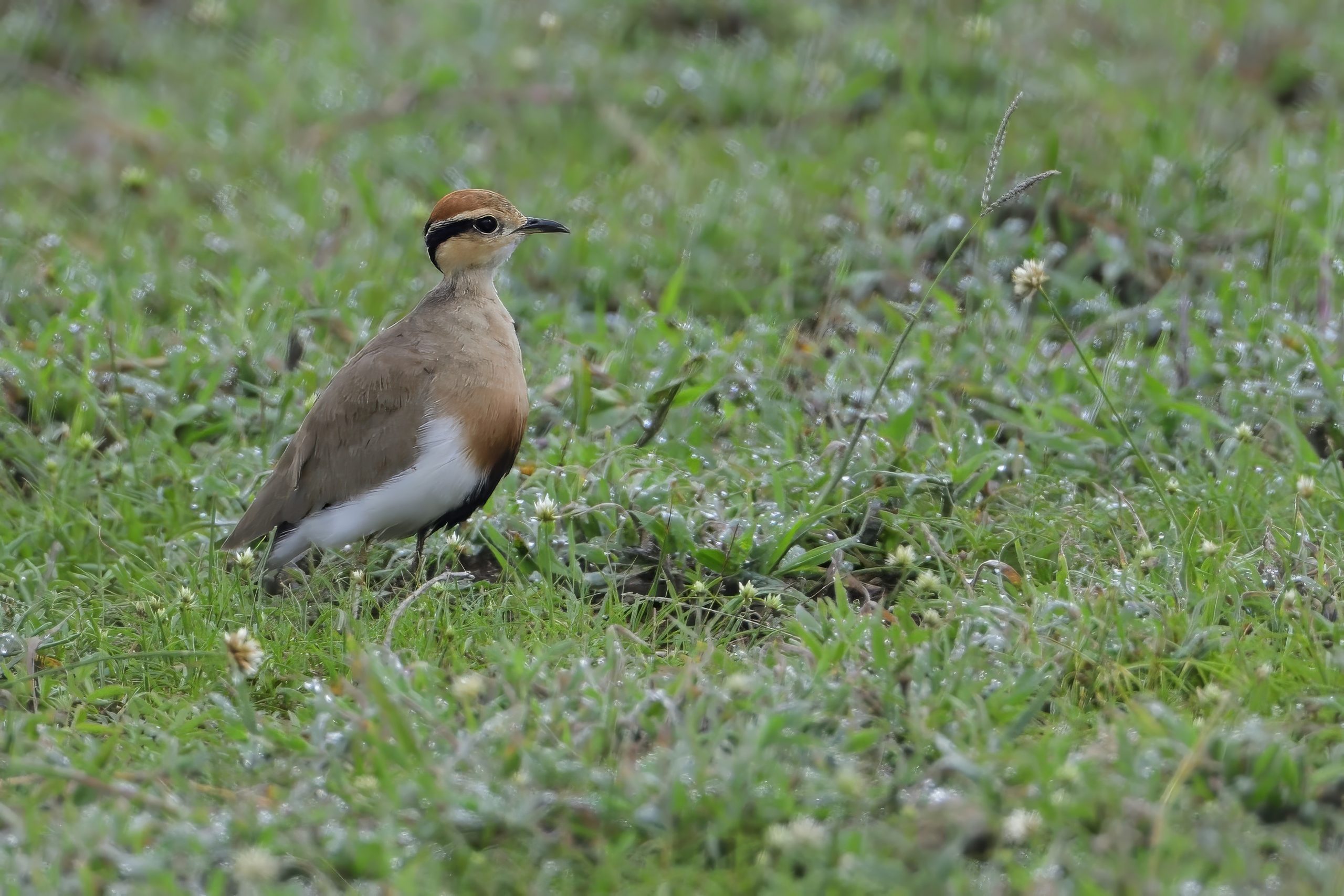
Temminck´s Courser, Cursorius temminckii

Kori Bustard, Ardeotis kori

Southern Grosbeak Canary, Chritagra buchanani, Endemic to N Tanzania and S Kenya

Namaqua Dove, Oena capensis

African Pipit, Anthus Cinnamomeus
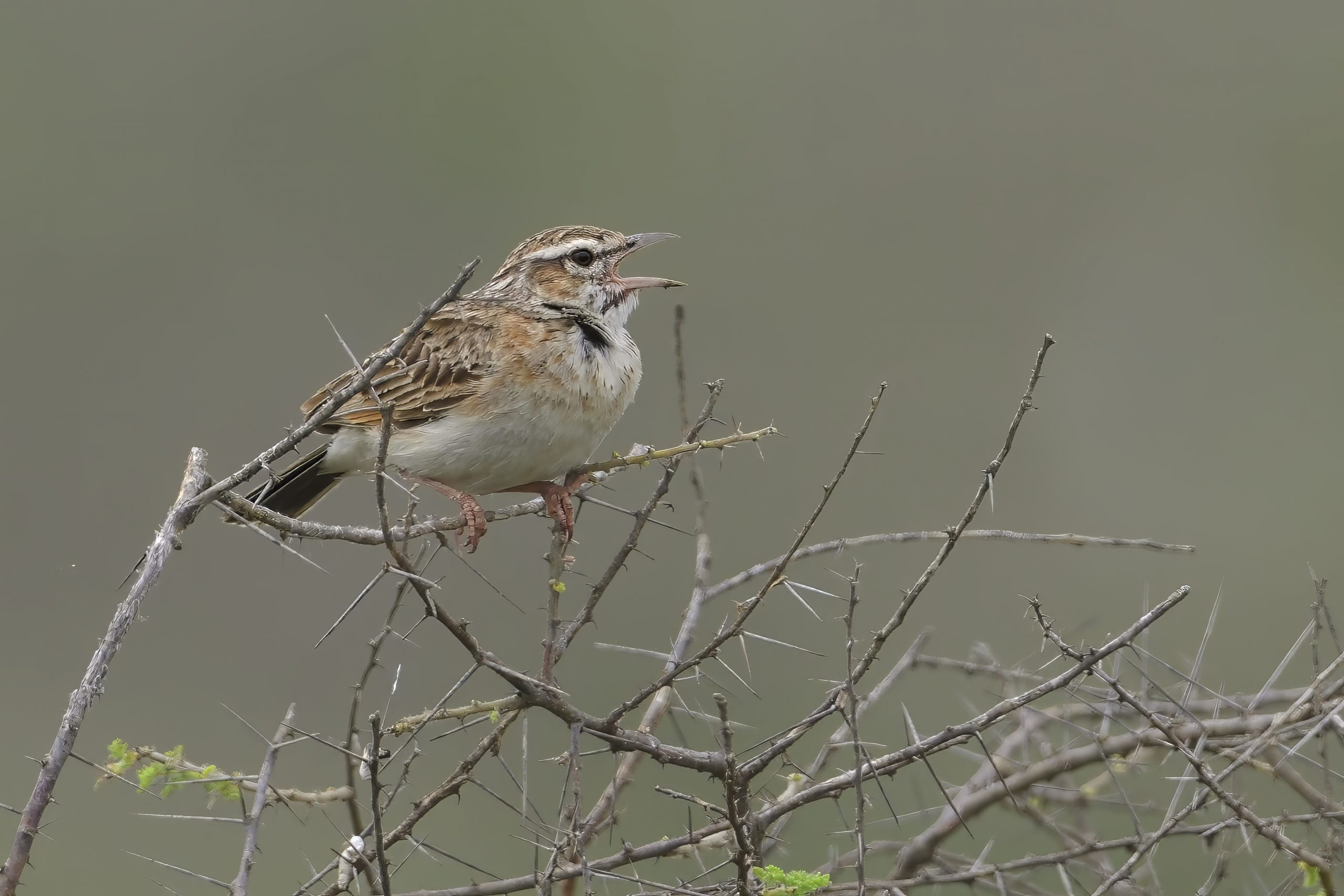
Foxy Lark, Calendulauda alopex, Endemic to NE Africa
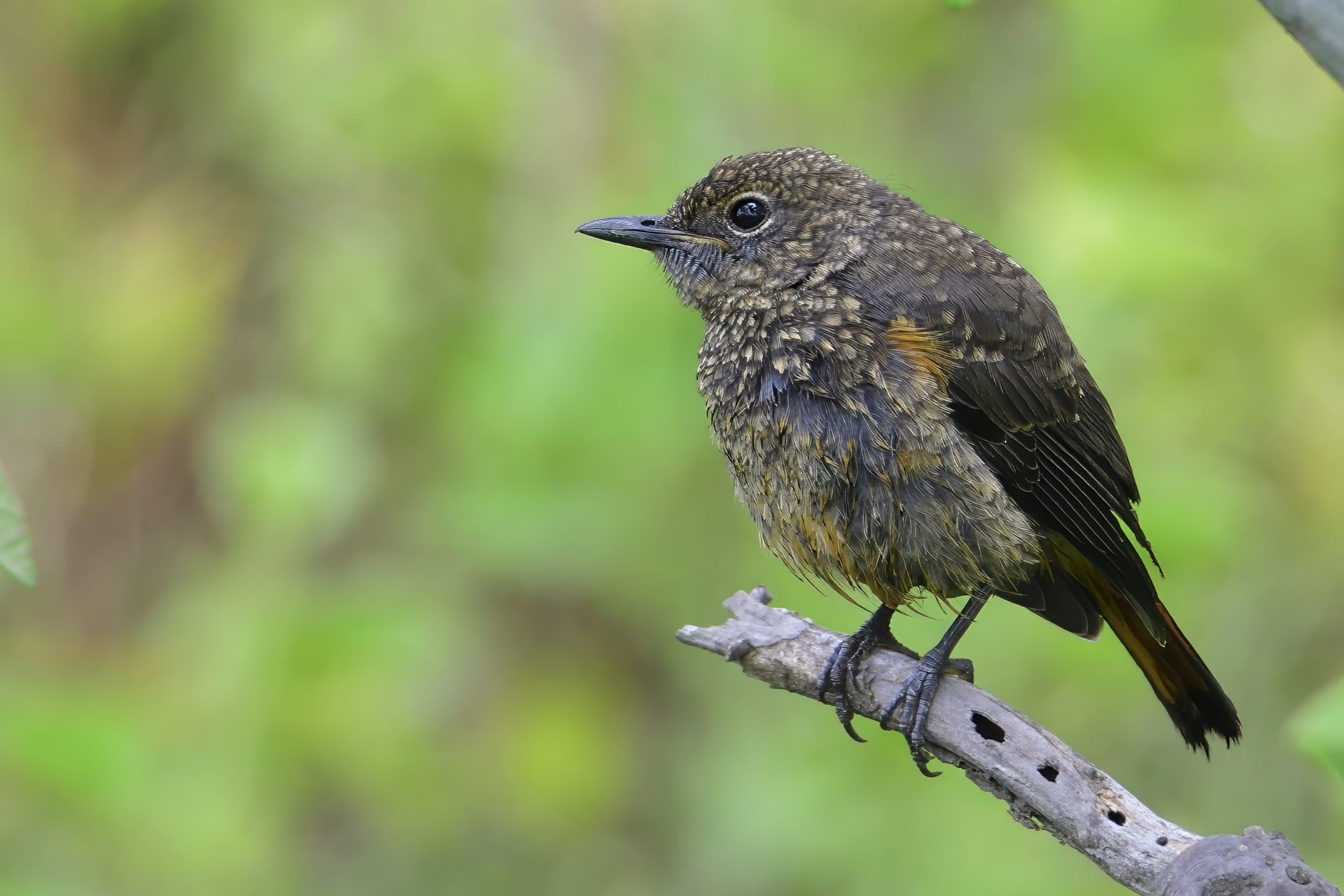
Little Rock Thrush, Juvenile, Monticola rufocinereus, Endemic to NE Africa

Red-and-yellow Barbet, Trachyphonus erythocephalus, Endemic to NE Africa

Schalow´s (Abyssinian) Wheatear, Juvenile, Oenanthe Schalowii

Streaky Seedeater, Crithagra striolata
Day 4, Monday, January 8, 2024: Tarangire NP to Karatu
It is a bit more than two hours drive from my house to Tarangire National Park. We started early stopped and birded a little on the way to the gate and registered Southern Red Bishop. Inside the gate and before breakfast we found amongst others, these species: Northern Red-billed Hornbill, Common Ostrich, Red-billed Buffalo Weaver, Mourning Collared Dove, Swahili Sparrow, Red-backed Shrike, Silverbird, Speckle-fronted Weaver, Desert Cisticola, Long-crested Eagle, Ashy Starling, Yellow-collared Lovebird, White-backed Vulture, Rufous-tailed Weaver, Grey Crowned Crane, Rüppel´s Vulture, Wire-tailed Swallow, Blue-cheeked Bee-eater and while having breakfast, Striped Kingfisher. After breakfast we continued my loop and picked up Von der Decken´s Hornbill, Bare-faced Go-away-bird, D´Arnaud´s Barbet, Secretarybird, African Hoopoe, African Hawk-Eagle, Yellow-necked Spurfowl, Double-banded Courser, Common Greenshank, Bateleur, Southern Ground Hornbill, Black-faced Sandgrouse, Grey kestrel, African Fish Eagle, Common Ringed Plover Water Thick-knee, White-bellied Bustard, Woodland Kingfisher, White-browed Sparrow-Weaver and White-headed Buffalo Weaver. The last two while having lunch at the exit gate. After the late lunch we headed towards Karatu. At one dam we saw a couple of Black-winged Stilt a little further on a massive flock of Abdim´s Stork. We drove on to Karatu, checked in to our guest house had dinner at a local restaurant and retired early to bed.
Some Pictures from Day 4:

Southern Red Bishop, Euplectes orix

Red-backed Shrike, Lanius collurio

Blue-cheeked Bee-eater, Merops persicus
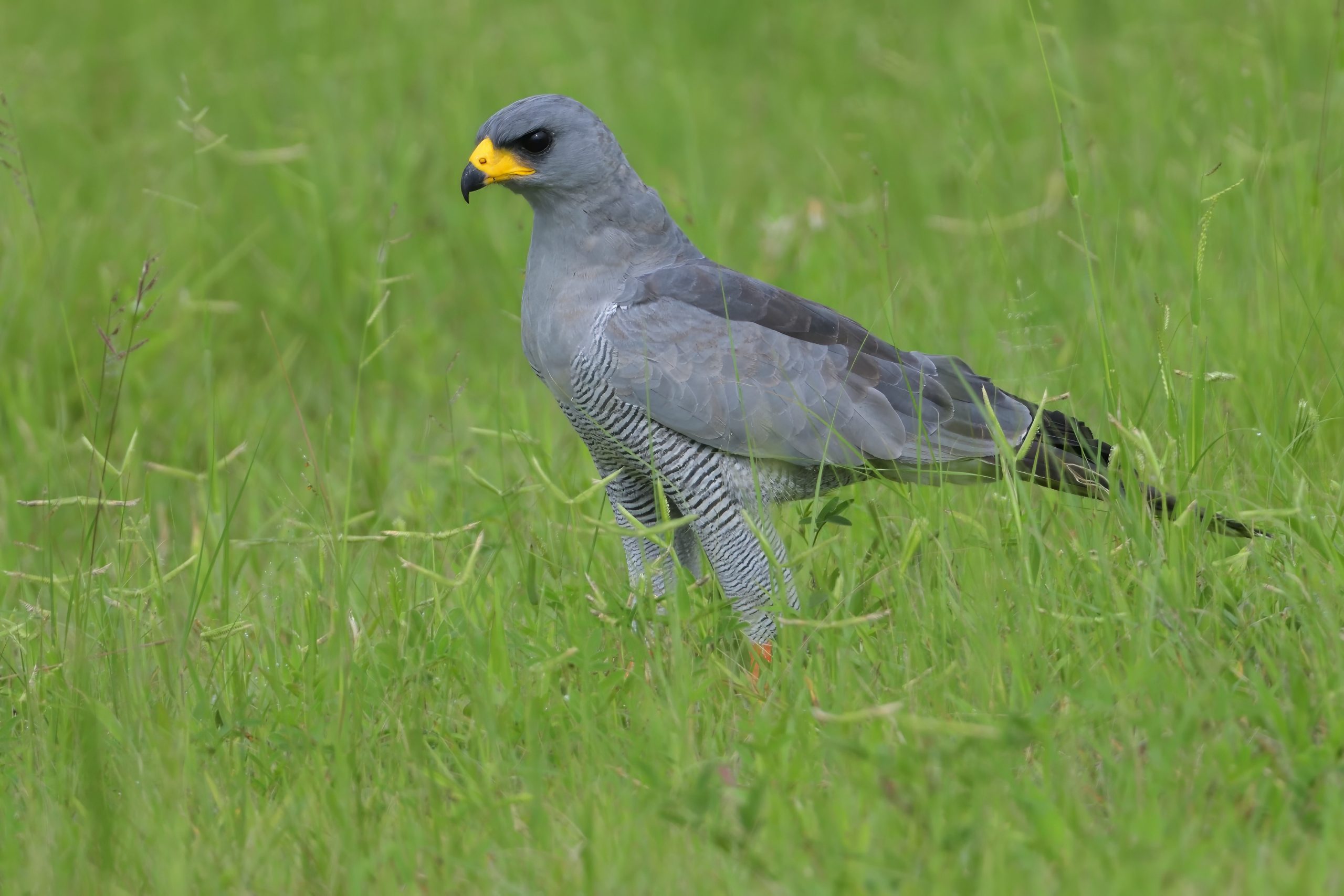
Eastern Chanting Goshawk, Melierax poliopterus, Endemic to NE Africa
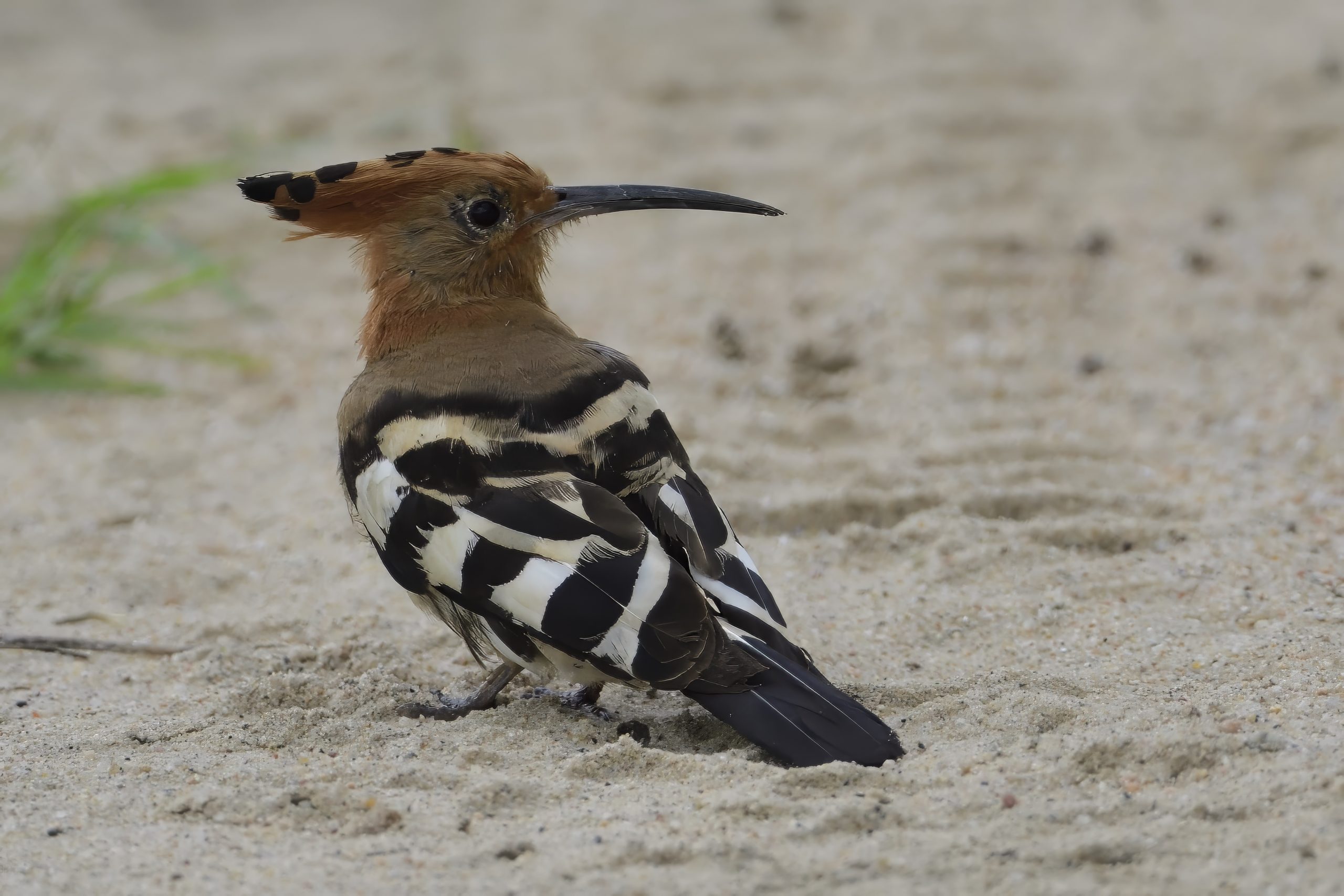
African Hoopoe, Upopa africana
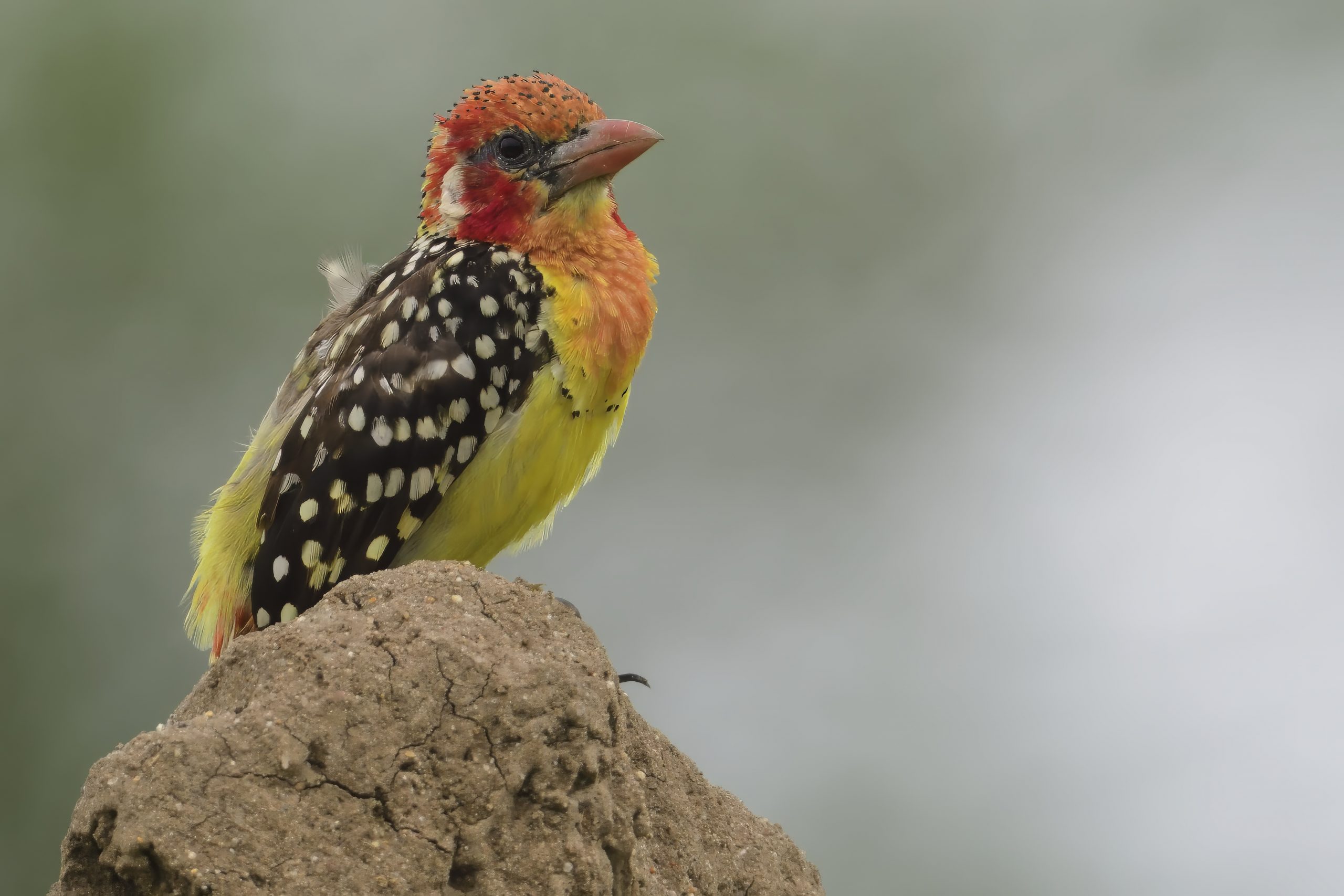
Red-and-yellow Barbet, Trachyphonus erythrocephalus, Endemic to NE Africa
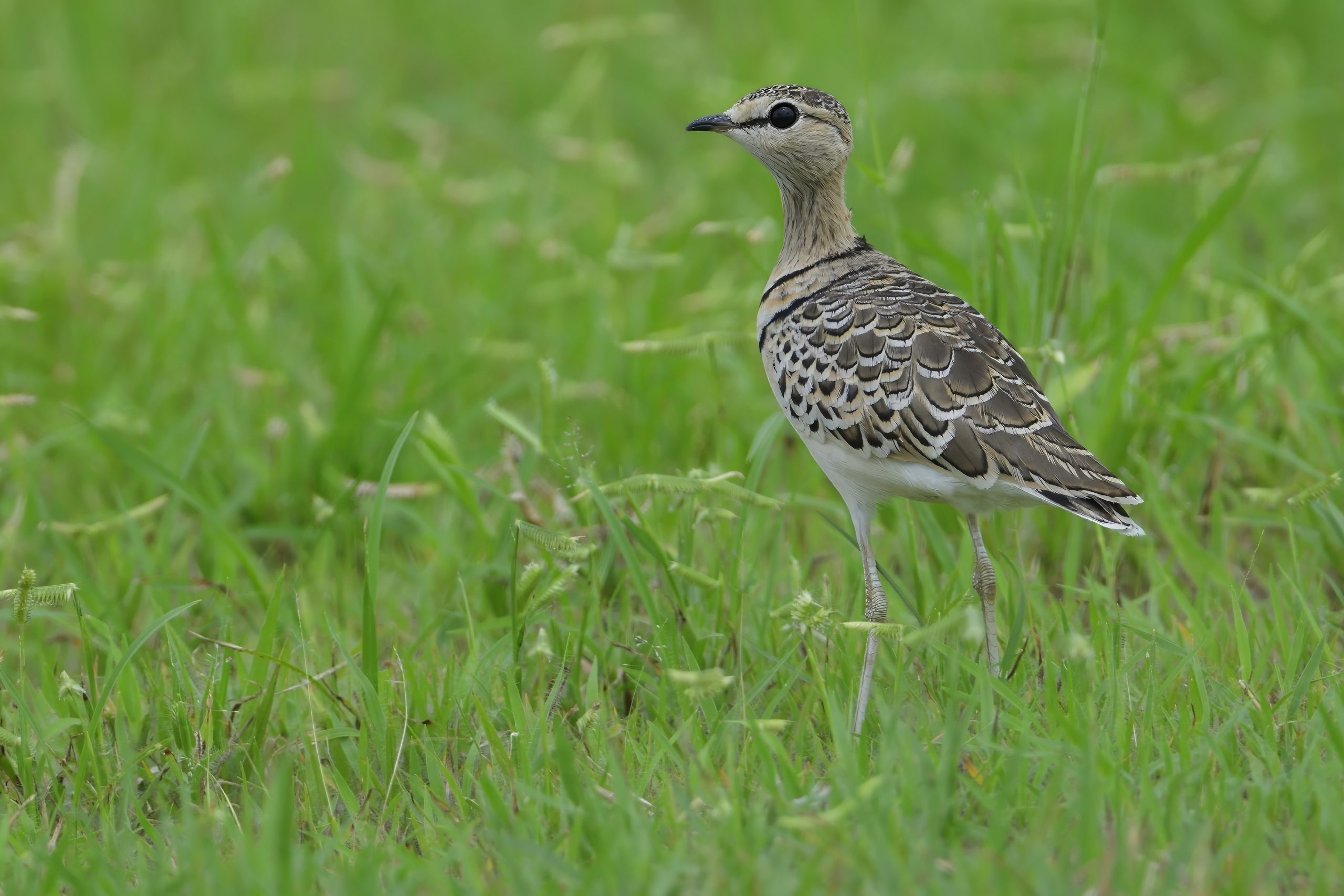
Double-banded Courser, Rhinoptilus africanus
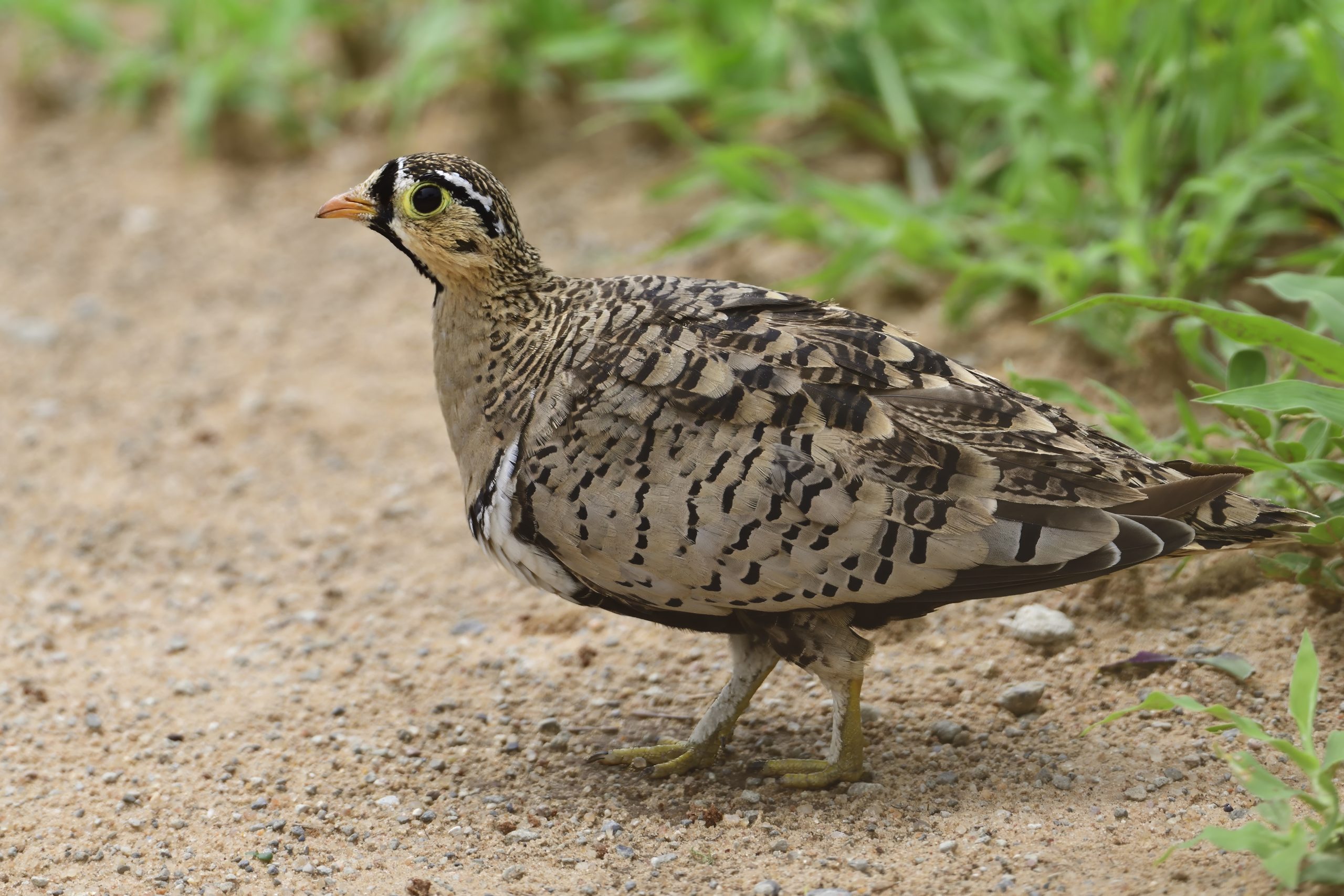
Black-faced Sangrouse, Pterocles decoratus, Endemic to NE Africa

Southern Ground Hornbill, Bucorvus leadbeateri

White-winged Widowbird, Euplectes albonotatus
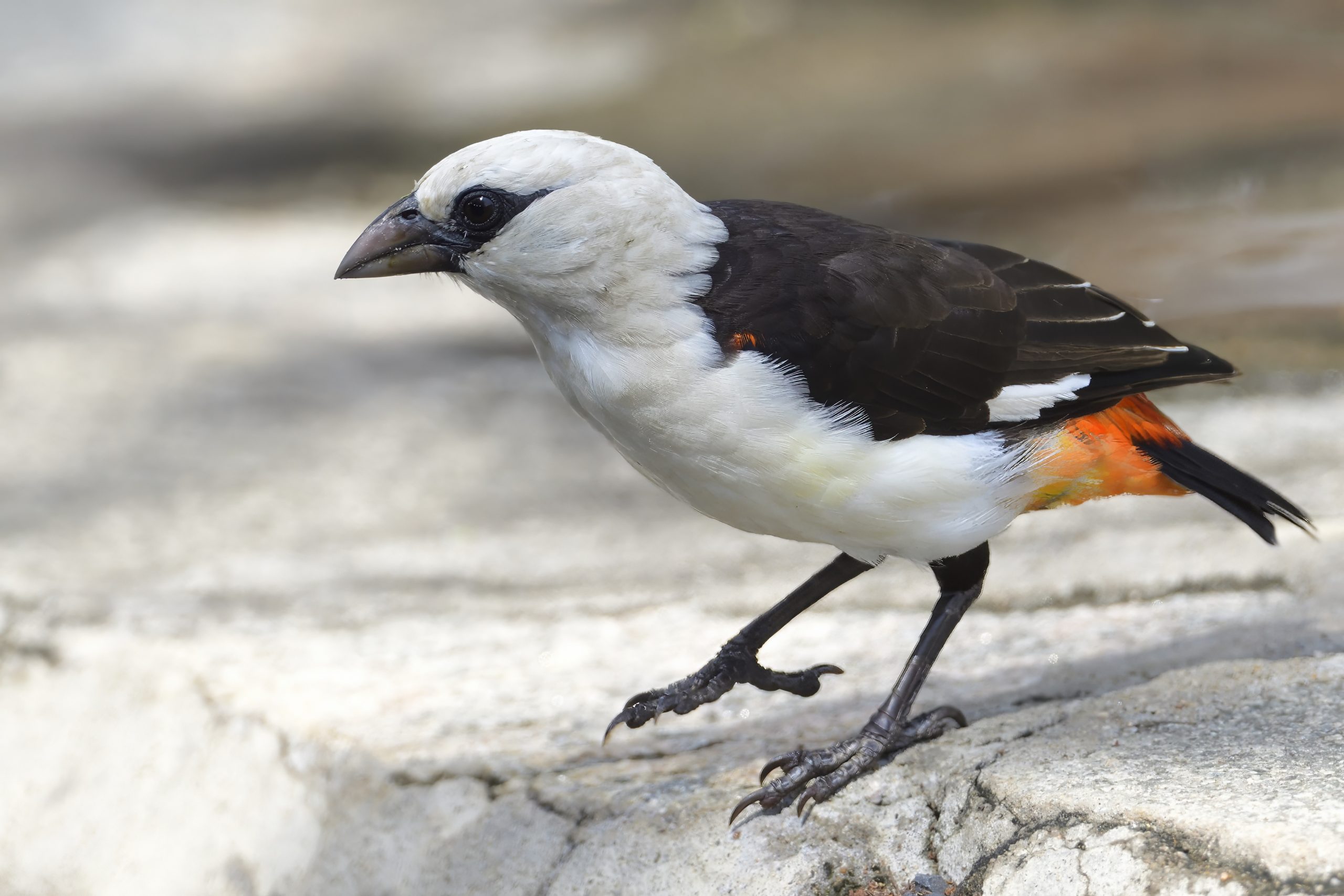
White-headed Buffalo Weaver, Dinemellia dinemelli, Endemic to NE Africa
Day 5, Tuesday, January 9, 2024: Endoro Trail, Karatu and Lake Eluanata
It is a short trip from our guest house to the start of the Endoro Trail (Elephant Cave Trail). We met up with our local guide Emmanuel and started walking up hill. Here are some of the birds we encountered on the way to the Elephant Caves: African Emerald Cuckoo, White-browed Robin-Chat, Lemon Dove, Collared Sunbird, Thick-billed Seedeater, Black-fronted Bushshrike, Black-backed Puffback, Red-throated Twinspot, Brown-headed Apalis, Schalow´s Turaco, White-eyed Slary Flycatcher, Grey-capped Warbler, Mbulu White-eye, Black-headed Oriole, Red-capped Robin-Chat, Mountain Greenbul, Purple-throated Cuckooshrike, Eastern Double-collared Sunbird, Grey-headed Nigrita, White-tailed Blue Flycatcher, Yellow-bellied Waxbill, Cinnamon-chested Bee-eater And at the Elephant Caves, Common Scimitarbill, African Dusky Flycatcher and Mountain Wagtail. After breakfast, we started our walk down to the entrance gate. Here are some of the new birds we saw: Abyssinian Crimsonwing, African Hill Babbler, Amethyst Sunbird, Mountain Buzzard, Eastern Crested Guineafowl, Cape Robin-Chat and Crowned Eagle. On the way to Nanja we registered the first Marabou Stork of the trip. At Lake Eluanata it was very quiet and we only picked up Spot-flanket Barbet, Chestnut Sparrow, Red-knobbed Coot, Intermediate Egret, Red-billed Teal and Yellow-fronted Canary before we were hit with a heavy rain storm. We manoeuvred back to the main road and drove straight home.
Some Pictures from Day 5

Red-throated Twinspot (female), Hypargos niveoguttatus

Brown-headed Apalis, Apalis alticola

White-eyed Slary Flycatcher, Melaenornis fischeri, Endemic for E and C Africa

Cape Robin-Chat, Cossypha caffra
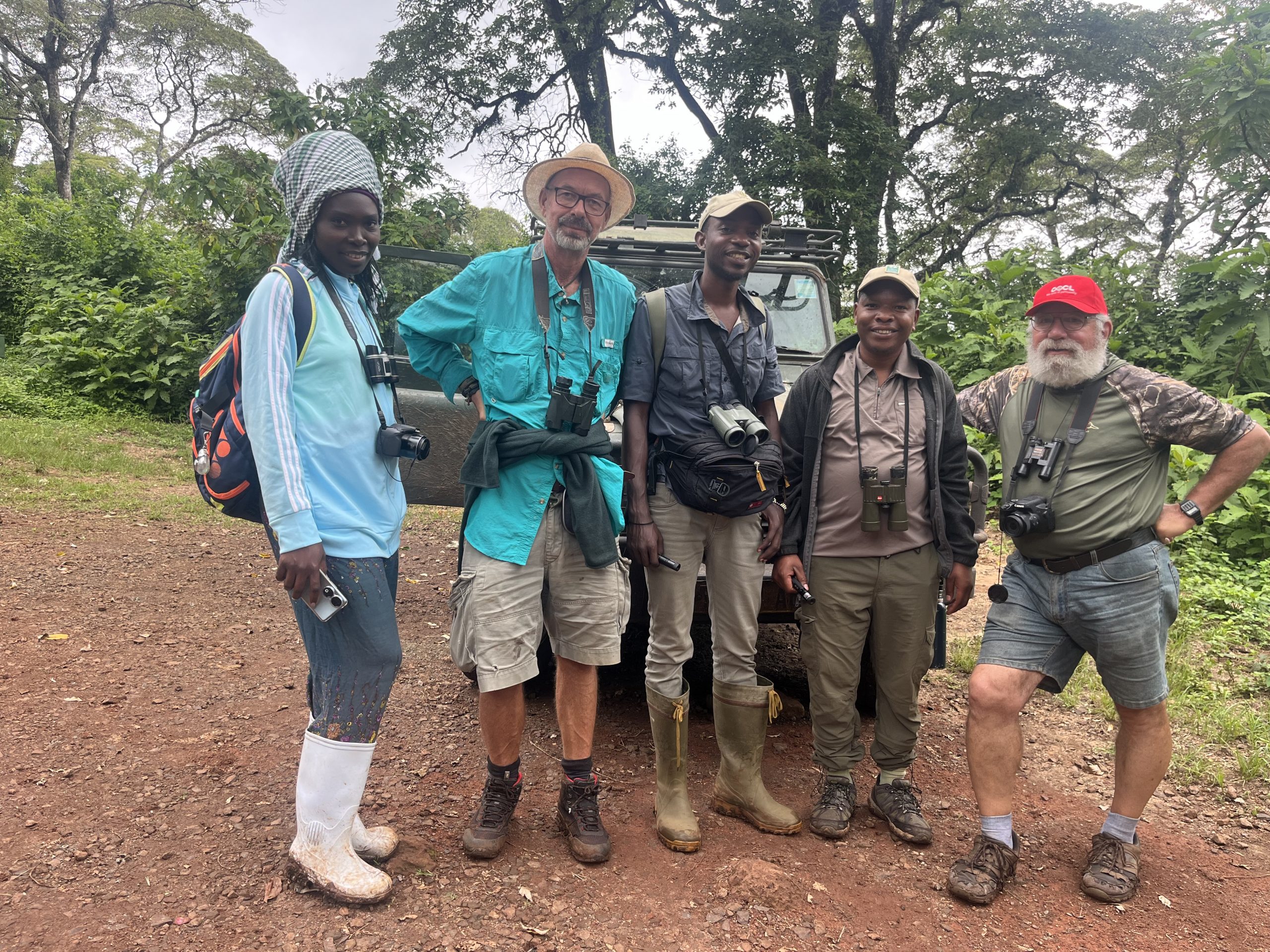
A happy gang after the Endoro Walk: Linet, me Dilenga, Emmanuel and Joseph
Day 6, Wednesday, January 10, 2024: Kiligolf, near Nyumba Ya Mungu Dam, Same and South Pare Mountains.
We had an early start again and came to my special spot near Nyumba Ya Mungu Dam. Our targets were Pringle´s Puffback and Scaly Chatterer. Again, we dipped on both of them. Instead we managed Somali Bunting, Desert Cisticola, White-rumped Swift, Great White Pelican, Meyer´s Parrot and Steel-blue Whydah. We drove on to Same and checked in to Elephant Motel. After lunch we went up South Pare Mountains and for the first time ever, I dipped on the South Pare White-eye. Instead we had Bar-throated Apalis, Black Saw-wing, East Coast Boubou, Evergreen Forest Warbler, Willow Warbler, Hartlaub´s Turaco, Moustached Tinkerbird, Cinnamon Bracken Warbler, Usambara Double-collared Sunbird, Mosque Swallow, African Harrier-Hawk and Black-headed Apalis. We returned to Elephant Motel ordered dinner, freshened up and had dinner. We retired early to bed.
Some pictures from Day 6:

Steel-blue Whydah, Vidua hypocherina, Endemic to NE Africa

Black Saw-wing, Psalidoprocne pristoptera

Usambara Double-collared Sunbird, Cinnyris usambaricus, Endemic to South Pare and Usambara Mountains of Tanzania
Day 7, Thursday, January 11, 2024: Same to Magamba Forest, West Usambara.
We went to my special place just outside Mkomazi National Park that morning, the light were quite good for a change. Here are some of the birds saw: Long-tailed Paradise Whydah, Yellow-spotted Bush Sparrow, Tiny Cisticola, Abyssinian Scimitarbill, Northern Brownbul, Black-bellied Sunbird, Grey-headed Bushshrike, Lesser Honeyguide, Lesser Striped Swallow, Yellow-breasted Apalis, Purple Roller, Grey Wren-Warbler, Somali Bunting and White-bellied Go-away-bird. We went back to the Motel, had breakfast, packed and were soon on our way to our next destination: Magamba Forest, West Usambara. We stopped at a spot I have just before Soni and managed: Mocking Cliff Chat, Grey Olive Greenbul and Eastern Golden Weaver. We continued to Soni, stocked up and were soon in our camp in Magamba. Camp where set up quickly, the local chicken were brought to a boil and we took off birding: Usambara Thrush, White-starred Robin, Eastern Bronze-naped Pigeon, Silvery-cheeked Hornbill, Red-capped Forest Warbler, White-chested Alethe, African Olive Pigeon and Fülleborn´s Boubou were recorded. We walked back to camp, shopped and fried some vegetables and made a nice Chicken Casserole. We ate and retired early to our tents.
Some pictures from Day 7:

Lesser Masked Swallow, Cecropis abyssinica
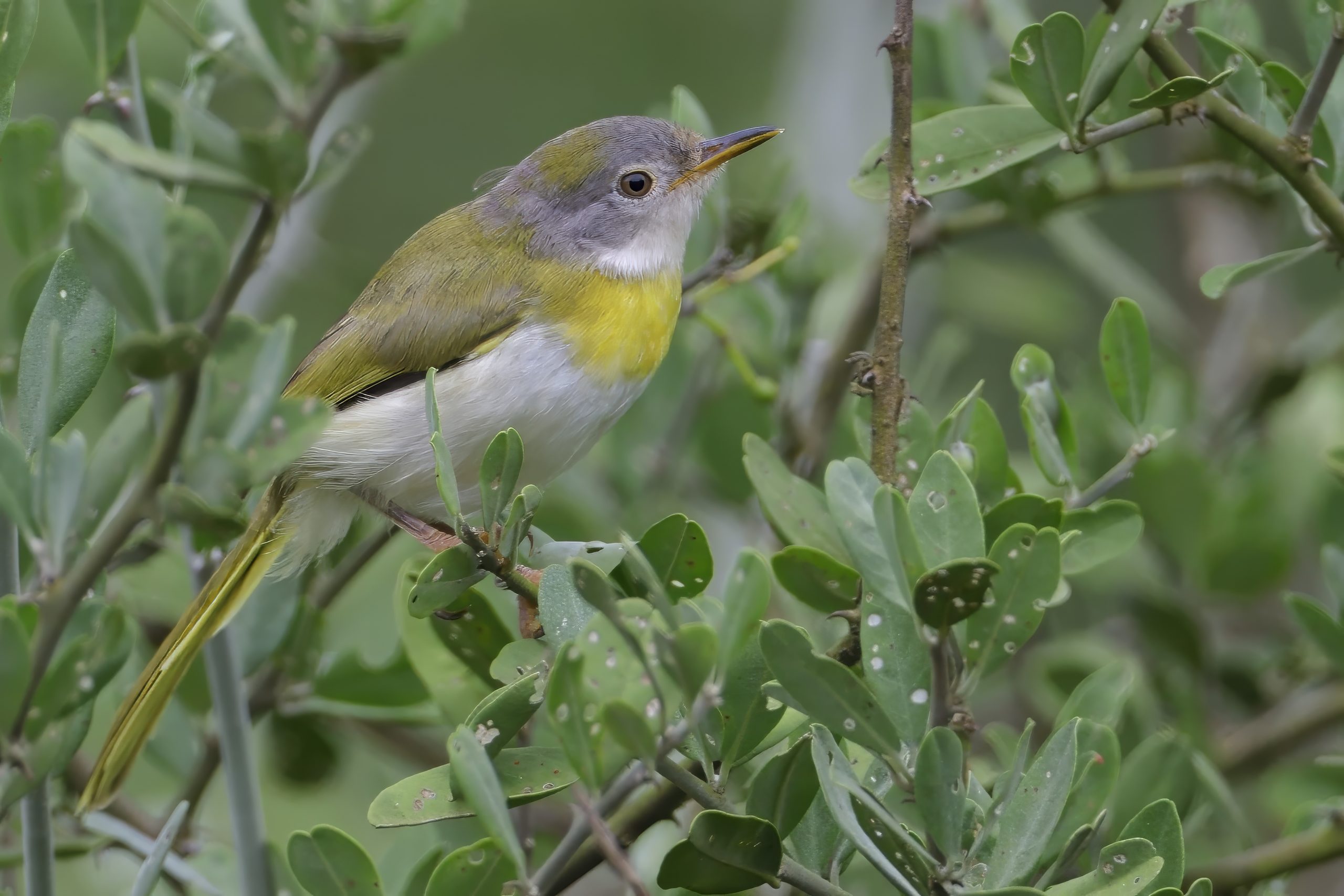
Yellow-breasted Apalis, Apalis flavida

White-bellied Go-away-bird, Crinifer leucogaster, Endemic to NE Africa

Long-tailed Paradise Whydah, Vidua paradisaea

Grey Wren-Warbler, Calamonastes simplex, Endemic to NE Africa

Somali Bunting, Emberiza Poliopleura, Endemic to NE Africa

Bar-throated Apalis (Race griseiceps), Apalis thoracica

Red-capped Forest Warbler, Artisornis metopias, Endemic to Eastern Arc Mountains of Tanzania and N Mozambique
Day 8, Friday, January 12, 2024: Magamba Forest
We had coffee at 06:45 and then walked uphill again. The weather were not on our side with heavy clouds and minimal of bird song. On the morning walk, we added the following species to our Magamba list: Sharpe´s and Kenrick´s Starling, White-tailed Crested Flycatcher, White-necked Raven, Southern Yellow White-eye and Yellow-throated Woodland Warbler. We walked back to camp and we had fantstic views of Sharpe´s Starling. I made breakfast. We relaxed a little and then started the new walk next to camp. We heard the Spot-throat again, but did not see it, but we had good views of both Bar-tailed Trogon and Usambara Akalat. Before lunch, I walked a little away from camp to get reception of course with the camera with me and managed to capture better images of the Usambara Thrush and also White-starred Robin. After lunch, we walked downhill, but it was still very quiet. We added Grey Wagtail and Waller´s Starling. When we returned just before camp, we found a pair of Oriole finch. We had dinner and sat by the bonfire for a while before we retired to our tents.
Some pictures from Day 8:
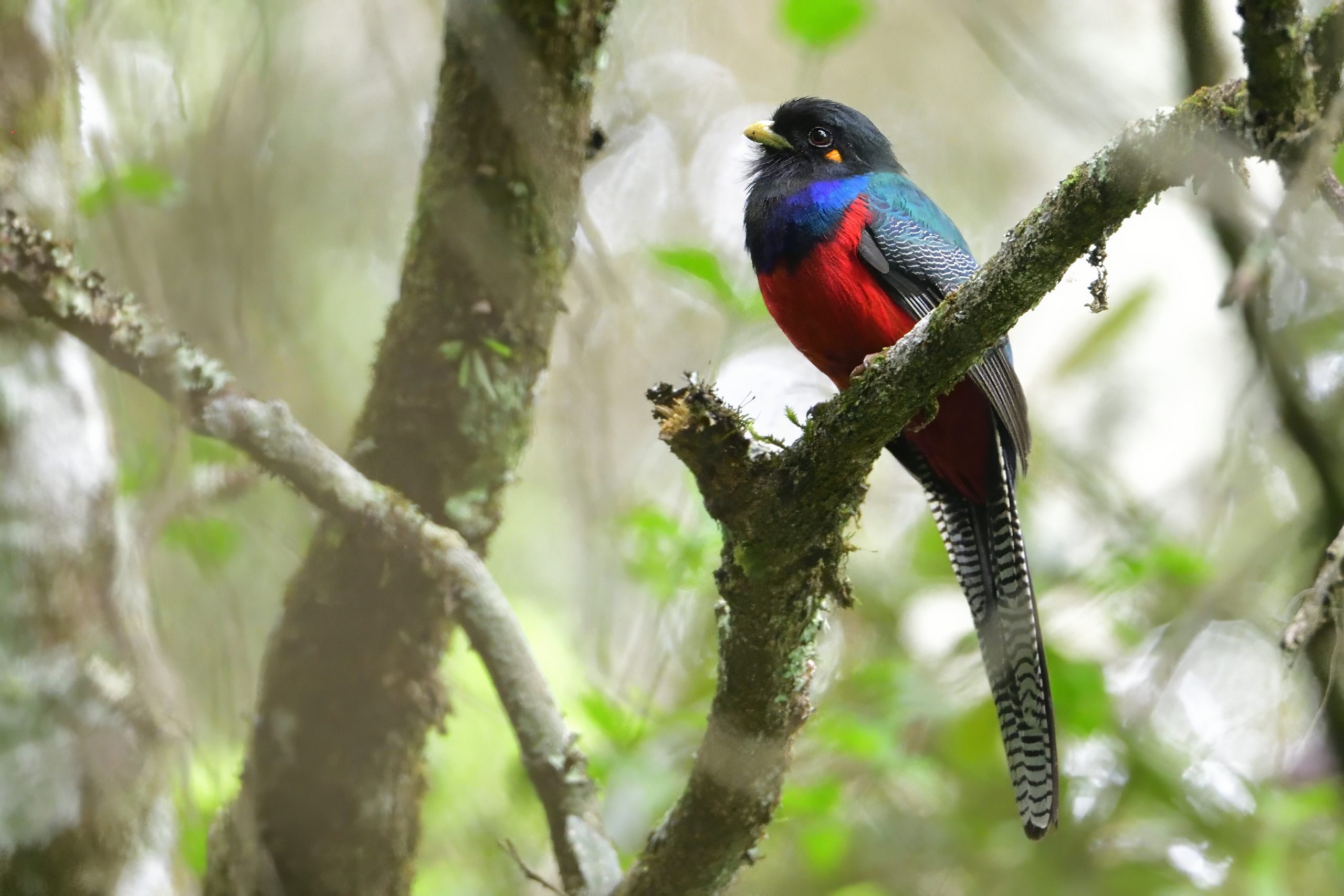
Bar-tailed Trogon, Apaloderma vittatum

Sharpe´s Starling, Poeptera sharpeii, Endemic to NE Africa

Usambara Thrush, Turdus roehli, Endemic to Usambara and Pare mountains in Tanzania
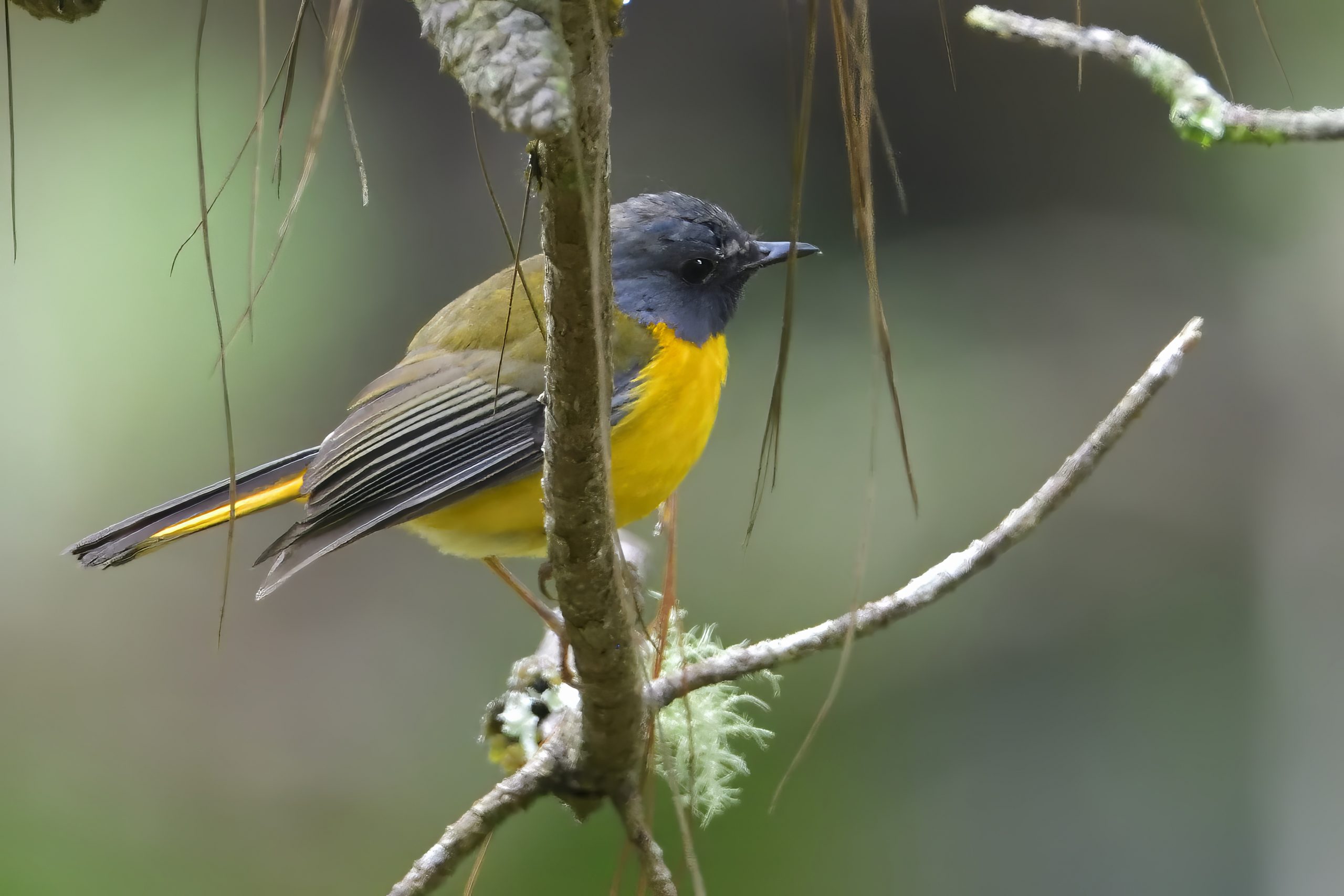
White-starred Robin, Pogonocichla stellata
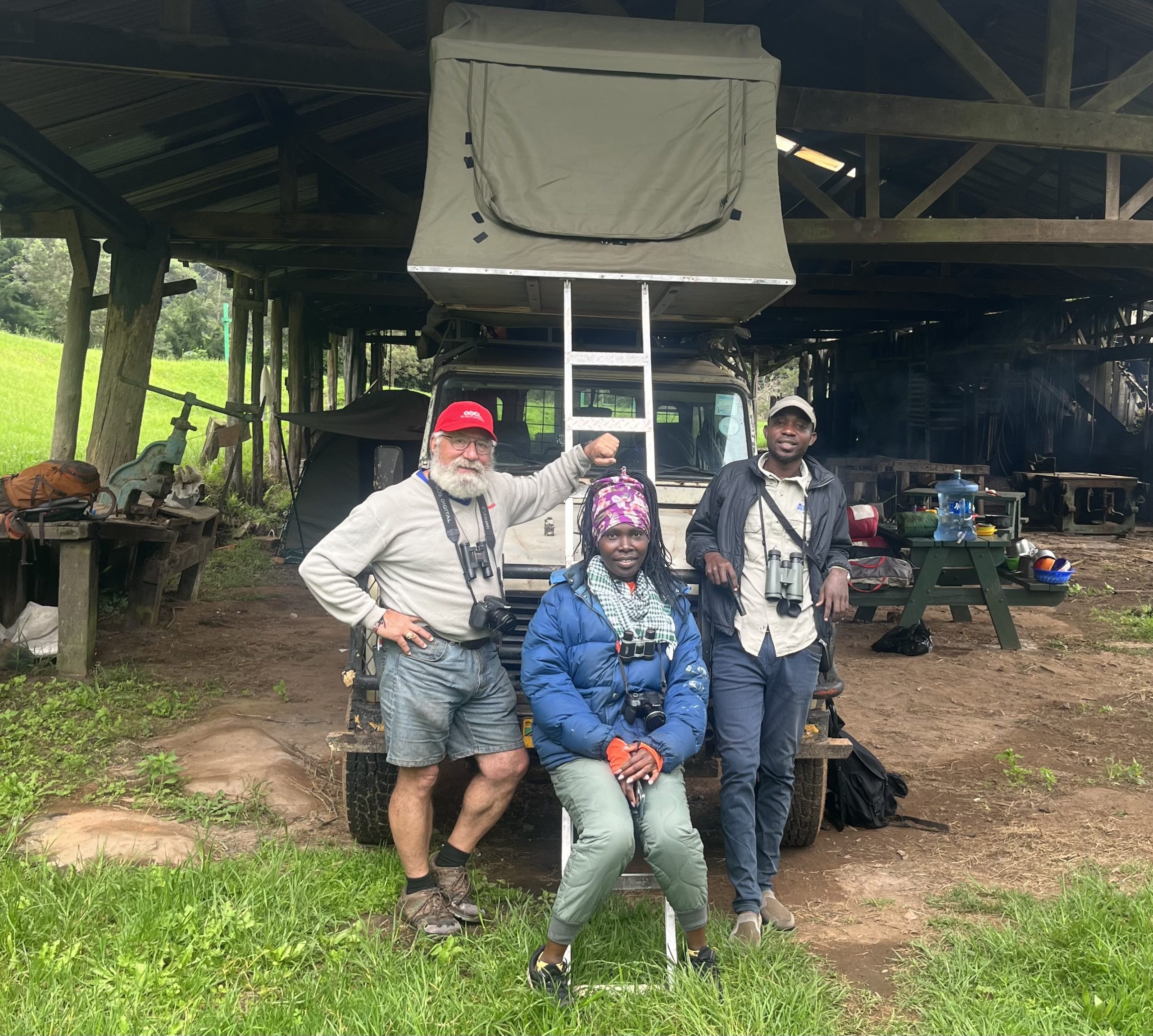
Joe, Linet and Dilenga posing in front of my home away from home in Magamba Forest.
Day 9, Saturday, January 13, 2024: Magamba Forest West Usambara to Amani Forest East Usambara.
We walked uphill in the morning, but added only Olive Sunbird and African Goshawk. We also had a Mountain Greenbul posing for a picture. We walked back to camp and I made breakfast. We packed the car and started driving slowly downhill. It had started raining, but at my second stop we finally found a pair of Usambara Weavers. When we came to the gate, it was too wet to go and look for the Spot-throat at my new place for it, so we pushed on. We had a stop in Segera to buy some Samosas, then continued all the way to the Amani Headquarters in Amani Forest East Usambara. In the afternoon, we had time for my normal walk in the botanical garden. We started our Amani list: Mountain Wagtail, Green Barbet, Banded Green Sunbird, Purple-banded Sunbird, African Green Pigeon, Red-backed Mannikin, Southern Citril, Tambourine Dove, White-eared Barbet and Black-and-white Shrike Flycatcher. We returned to camp, freshened up and had dinner.
One picture from Magamba Day 9:

Mountain Greenbul, Arizelocichla nigriceps, Endemic to highland forests of N Tanzania and S Kenya
Day 10, Sunday, January 14, 2024: Amani Forest.
We drove uphill that morning and had our normal special species to hunt for. We found the Half-collared Kingfisher on the way up. No signs of the the Long-billed Forest Warbler and I only heard the Kretchmer´s Longbill: Other birds encountered in the Kwamkoro area included: Little Greenbul, Green-headed Oriole, Fischer´s Turaco and Ashy Flycatcher. We had taken a walk and were back by the car. I needed to do a natures errand and walked off without my bins and camera. I saw a small bird I could not ID with my bare eyes so I went back to the car and grabbed my bins and my camera. It turned out to be a Green Twinspot. I had sent the others in search of the Cabanis´s Bunting. They had not seen it. We walked a little longer and found it. We walked back to the car and got White-browed Robin-Chat, Common Waxbill and Shelley´s Greenbul. We ate our packed breakfast and tried a little more for the Forest Warbler and Longbill, but no luck. We drove down to the road that leads to the spot for Sharpe´s Akalat. As last time the road were blocked by a fallen tree (different to the one last time). We drove slowly back to camp and stopped for an African Emerald Cuckoo. At camp we walked a short way up the forest and heard Yellow-streaked Greenbul. We had lunch and after lunch, we walked the same path as the day before. We were still missing 2 species in that area. We only found one of them, the Pale Batis, but for the first time dipped on the Uluguru Violet-backed Sunbird. After the walk we drove down to our new accommodation near Zigi Forest. We freshened up and had dinner and again retired early to bed.
Some Pictures from Day 10:
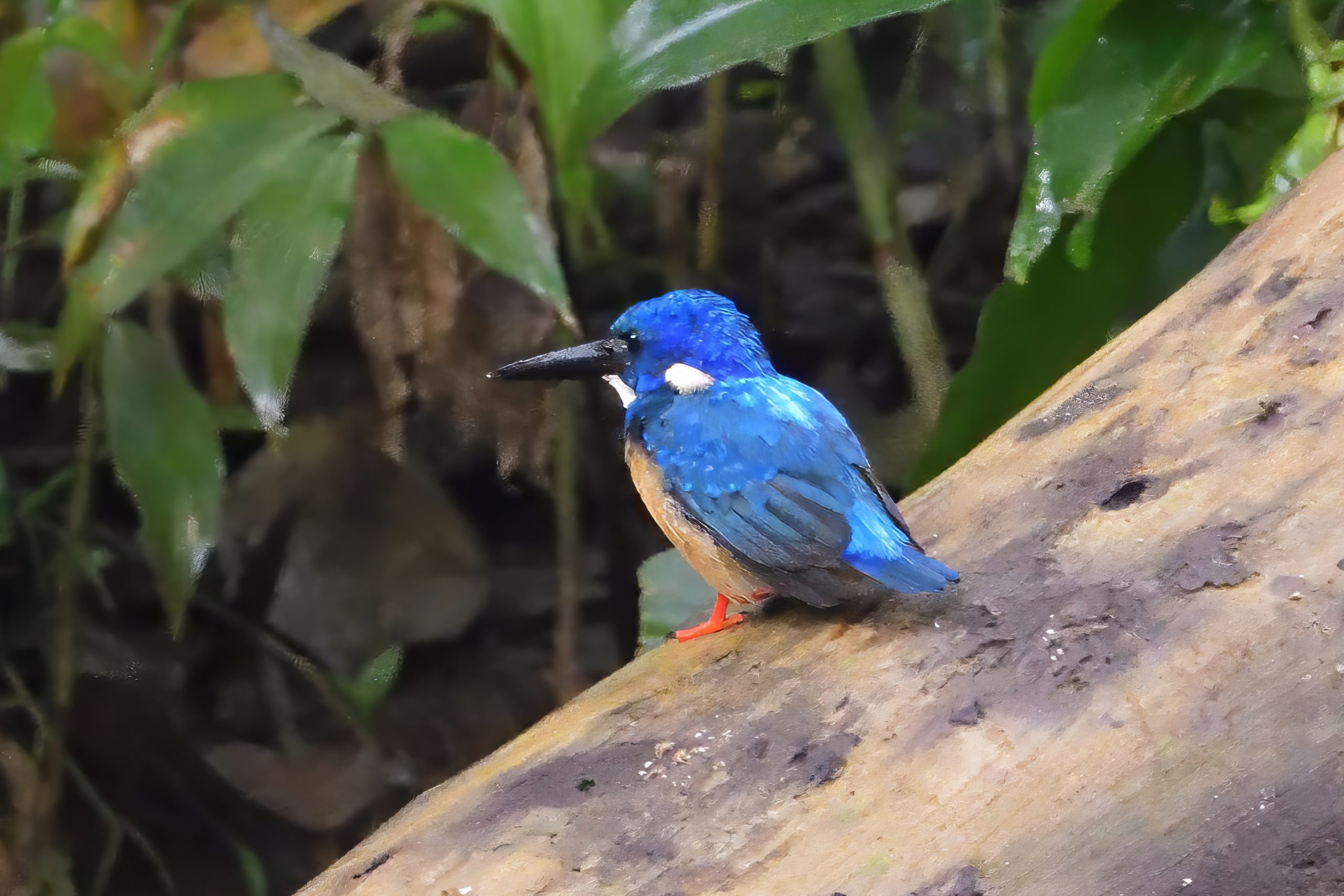
Half-collared Kingfisher, Alcedo semitorquata
Green Twinspot, Mandingoa nitidula


White-browed Robin-Chat, Cossypha heuglini
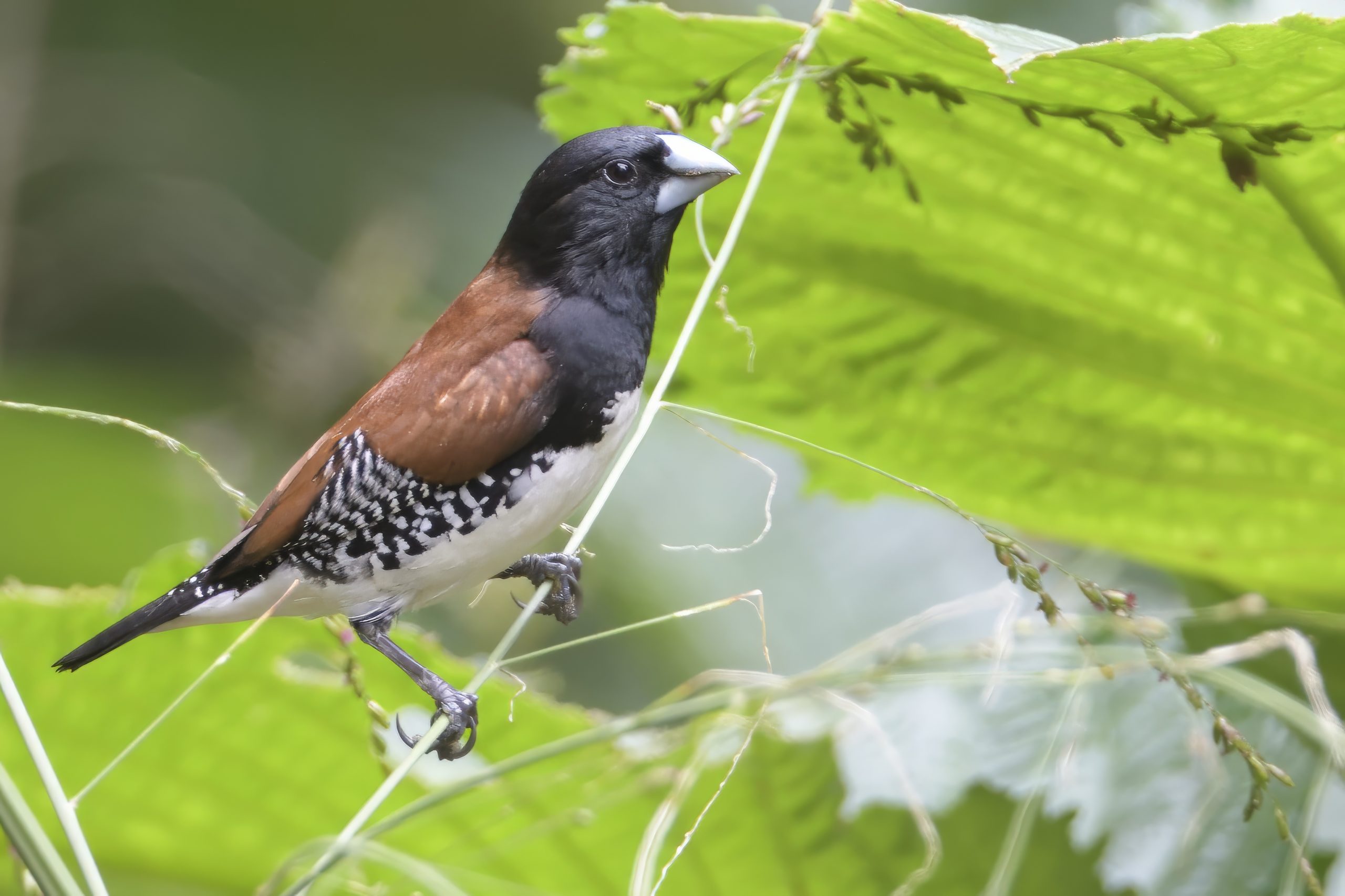
Red-backed Mannikin, Lonchura nigriceps
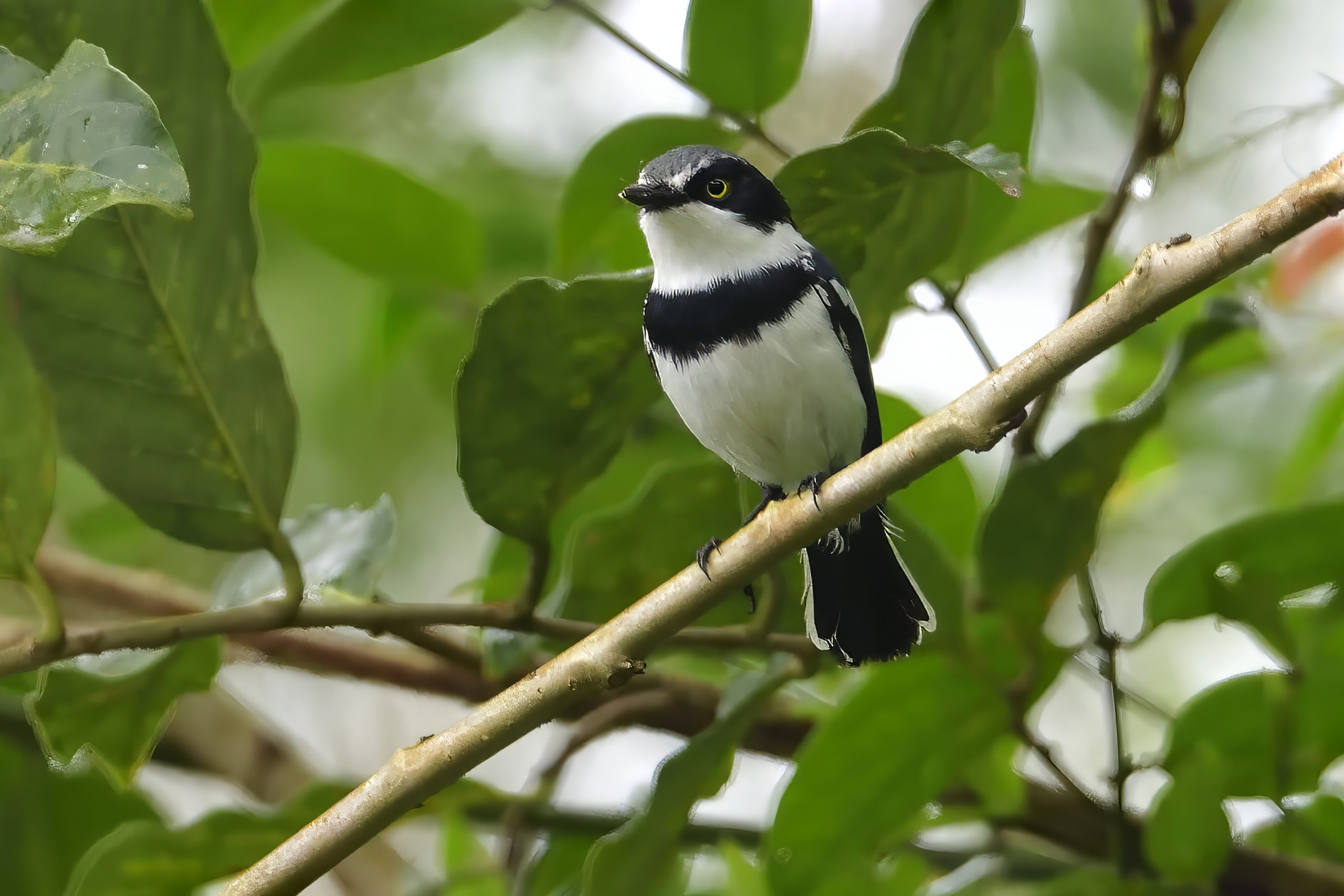
Pale Batis, Batis Soror, Endemic to SE Africa
Day 11, Monday, January 15, 2024: Zigi Forest, Amani
We drove down to Zigi Forest. I stopped at my normal spot for Tanzania Illadopsis. It were singing and singing deep inside a bush, but eventually both Linet and Joe got a view of it. The forest were very quiet that morning and we only managed to add the following species to our Amani list: Dark-backed Weaver, Common Square-tailed Drongo and Red-capped Robin-Chat. We drove back to camp in good time before lunch, had lunch, relaxed a little and drove down back to Zigi Forest. The forest were still very quiet. Here are the birds we added to our list: Yellow-rumped Tinkerbird, African Golden Oriole, Blue-spotted Wood Dove and Palm-nut Vulture. We also had a flock of Green Twinspots, but I think only Dilenga and I saw them. We drove back to camp, freshened up, had dinner and retired early to bed as usual.
Some pictures from Day 11:
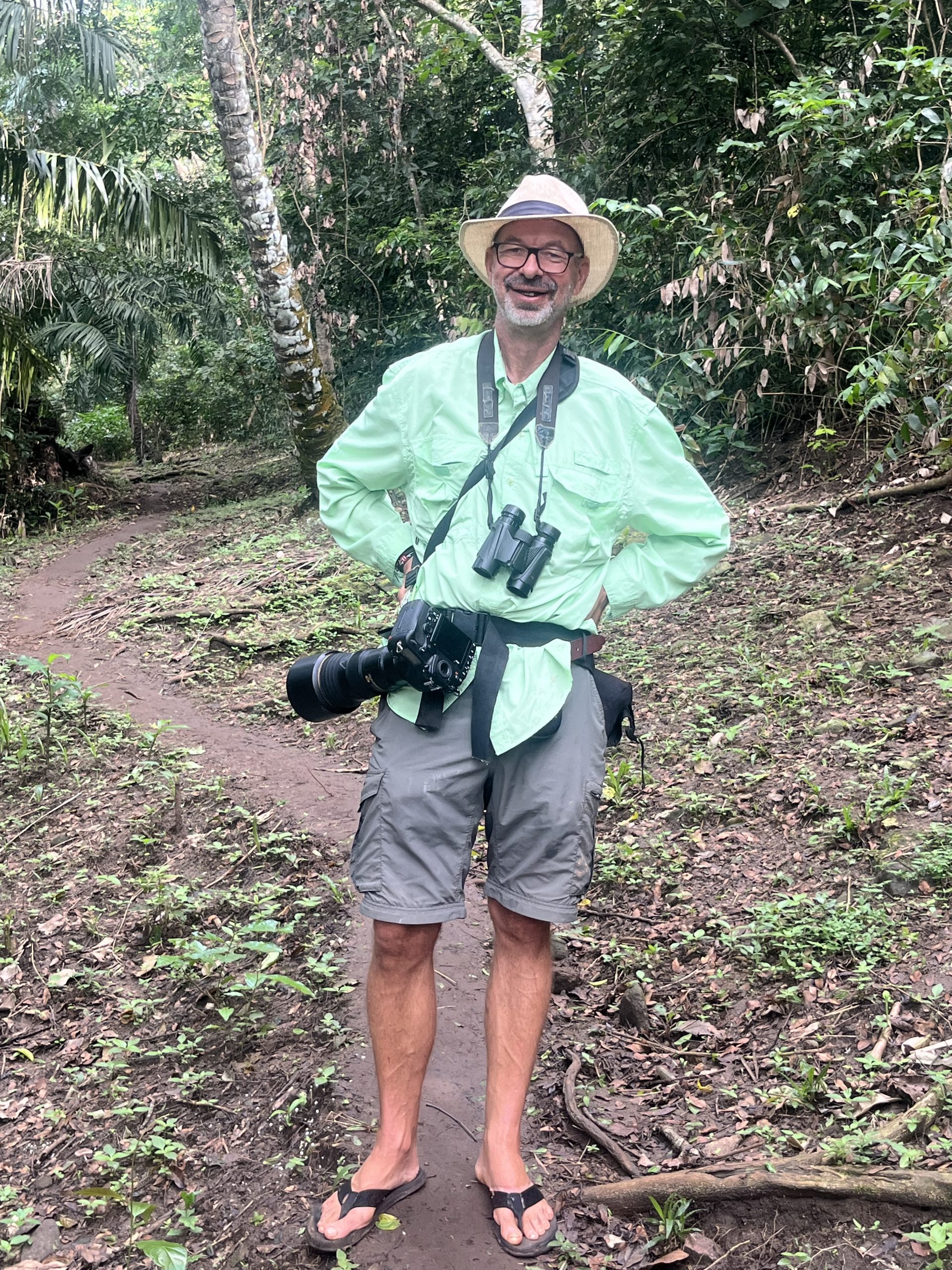
A very happy man that managed to locate the Tanzanian Illadopsis for my friends.
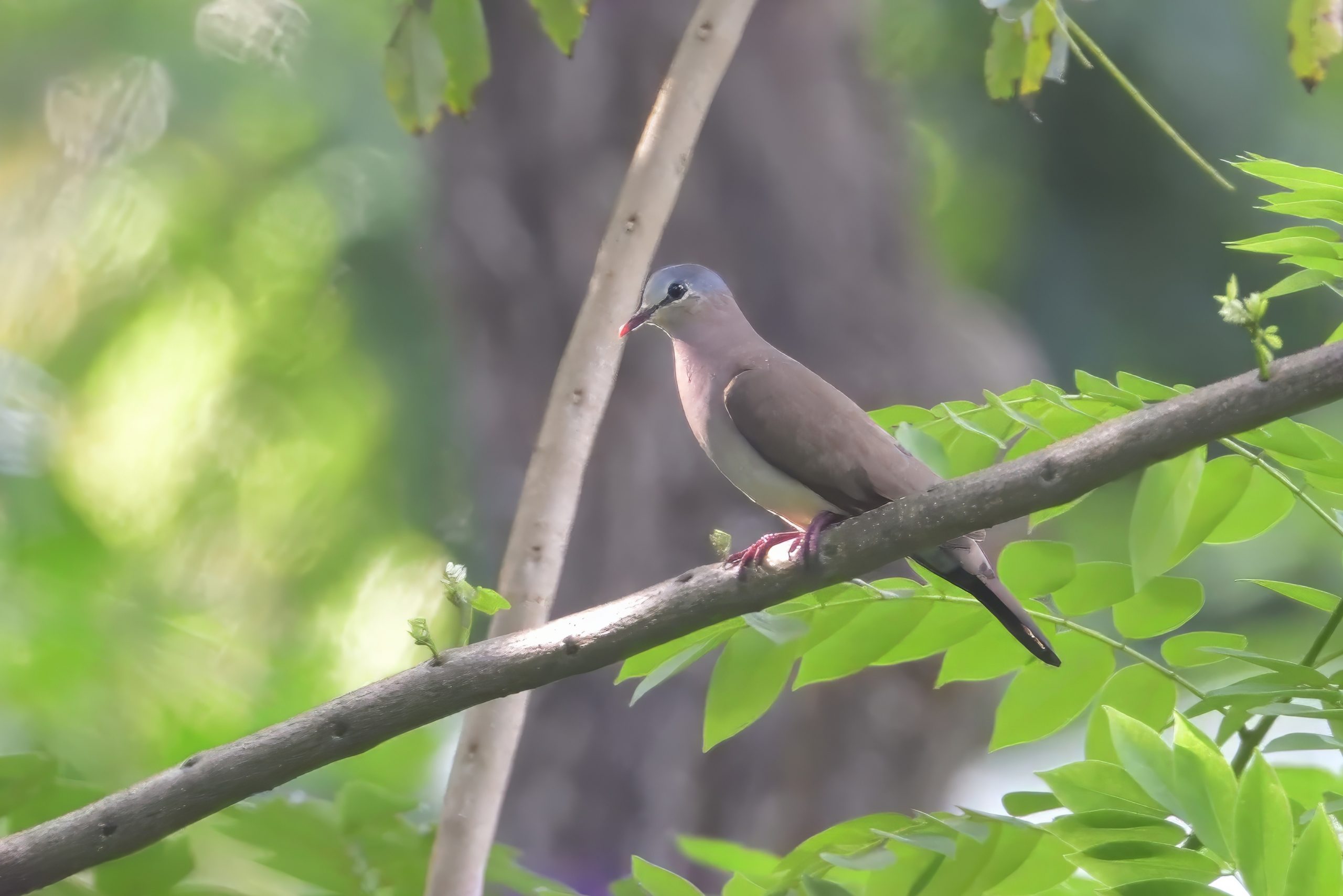
Blue-spotted Wood-Dove, Turtur afer
Day 12, Tuesday, January 16, 2024: Zigi Forest, Amani – home to Kiligolf
We packed the car before we took off that morning. Zigi Forest were still very quiet. Very strange indeed. We only managed to add Red-tailed Ant Thrush, Forest Batis, Crowned Hornbill and Ayre´s Hawk-Eagle to our Amani list. We stopped before Muheza to look for Kurichane Thrush and Collared Palm Thrush, but dipped on both of them. I heard a Green Tinkerbird calling and called it in. Another bird that had eluded us in Amani. We also added Coastal Cisticola and Striped Kingfisher to our Amani list. We left heading for home, had a brief stop in Segera to refuel the Landy and buy some Samosas for the road. We did not see anything of interest on the long drive home and due to very light traffic through Moshi arrived home well before darkness. We had dinner and retired early to bed.
No Pictures from Day 12
Day 13, Wednesday, January 17, 2024: Ngarasero Lodge and Kalinga Forest.
We had an easy morning with breakfast at home before we headed for Ngarasero Lodge. At the forest surrounding the lodge, we saw amongst other these species: African Black Duck, Common Moorhen, Giant Kingfisher, Black Crake, Reed Cormorant, Palm-nut Vulture, Little Grebe, Tambourine Dove, African Paradise Flycatcher, Grey-Olive and Placid Greenbul, Little Rush Warbler, Silvery-cheeked Hornbill, African Fish Eagle, Hadada Ibis, Rüppel´s Robin-Chat and Grey-backed Camaroptera. We had lunch in Usa River before we headed to Kalinga Forest. We stopped to tick Village Weaver on the way. I had paid entrance fee for the forest at the proper forest authorities, but we were still stopped by the local village chief that said we were tresspassing. I reported back to the Forest authorities so it went well, but it were a very unecessary experience. Here are some of the birds we registered in Kalinga Forest: African Emerald Cuckoo, Black-headed Oriole, Trilling Cisticola, Black-fronted Bushshrike, Eastern Bronze-naped Pigeon, Abbot´s Starling, Golden-tailed Woodpecker, Green Malkoha, White-eared Barbet, Black-headed Apalis, Crowned Horbill, Forest Batis, Narina Trogon, Tambourine Dove and Tropical Boubou. I tried for the Buff-spotted Flufftail, but no respons. On the way home I stopped for the Taveta Weaver just for the list since both Linet and Joe had it from before. We drove home, freshened up and had a nice dinner and again I retired early to bed.
Some pictures from Day 13
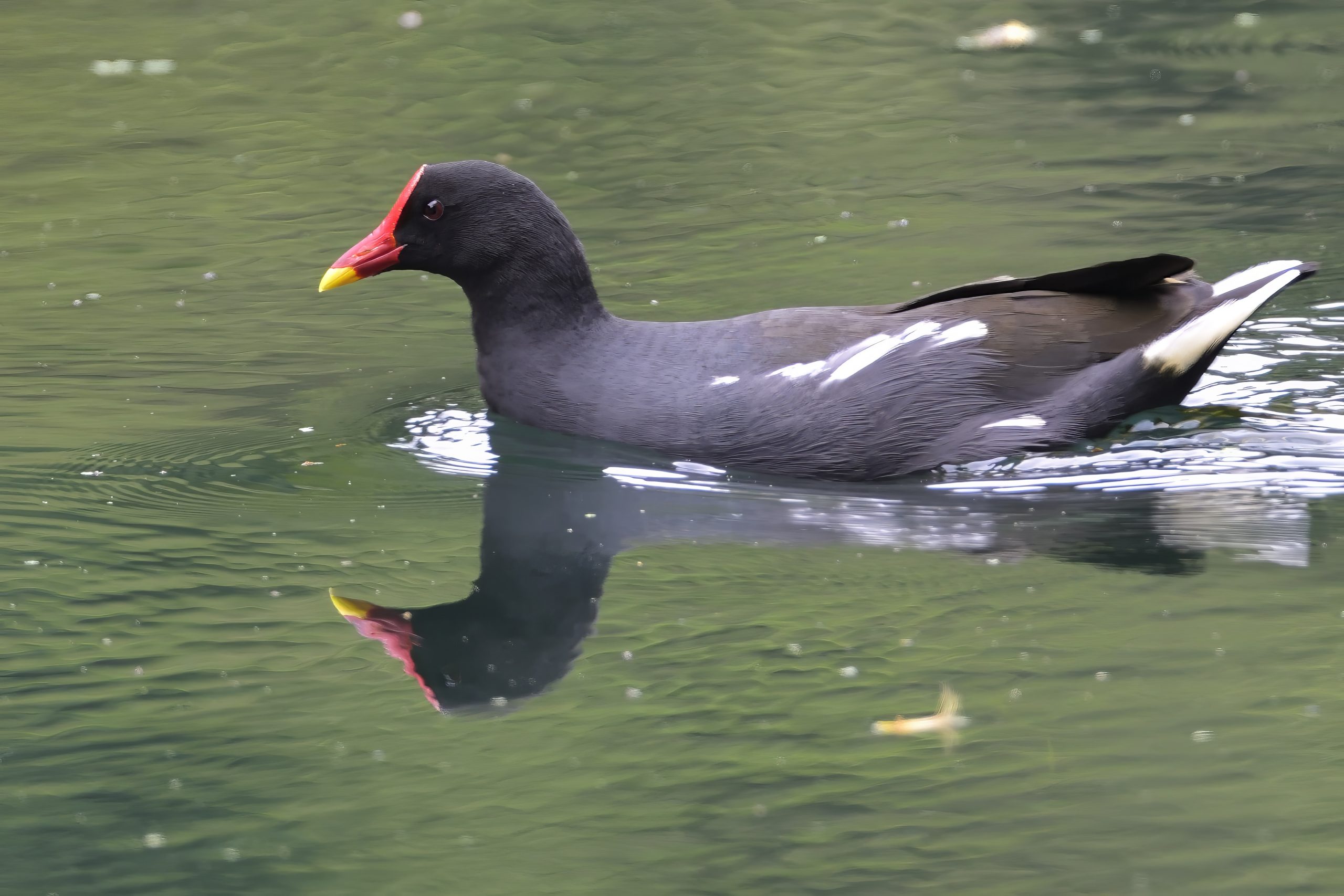
Common Moorhen, Galinula chloropus
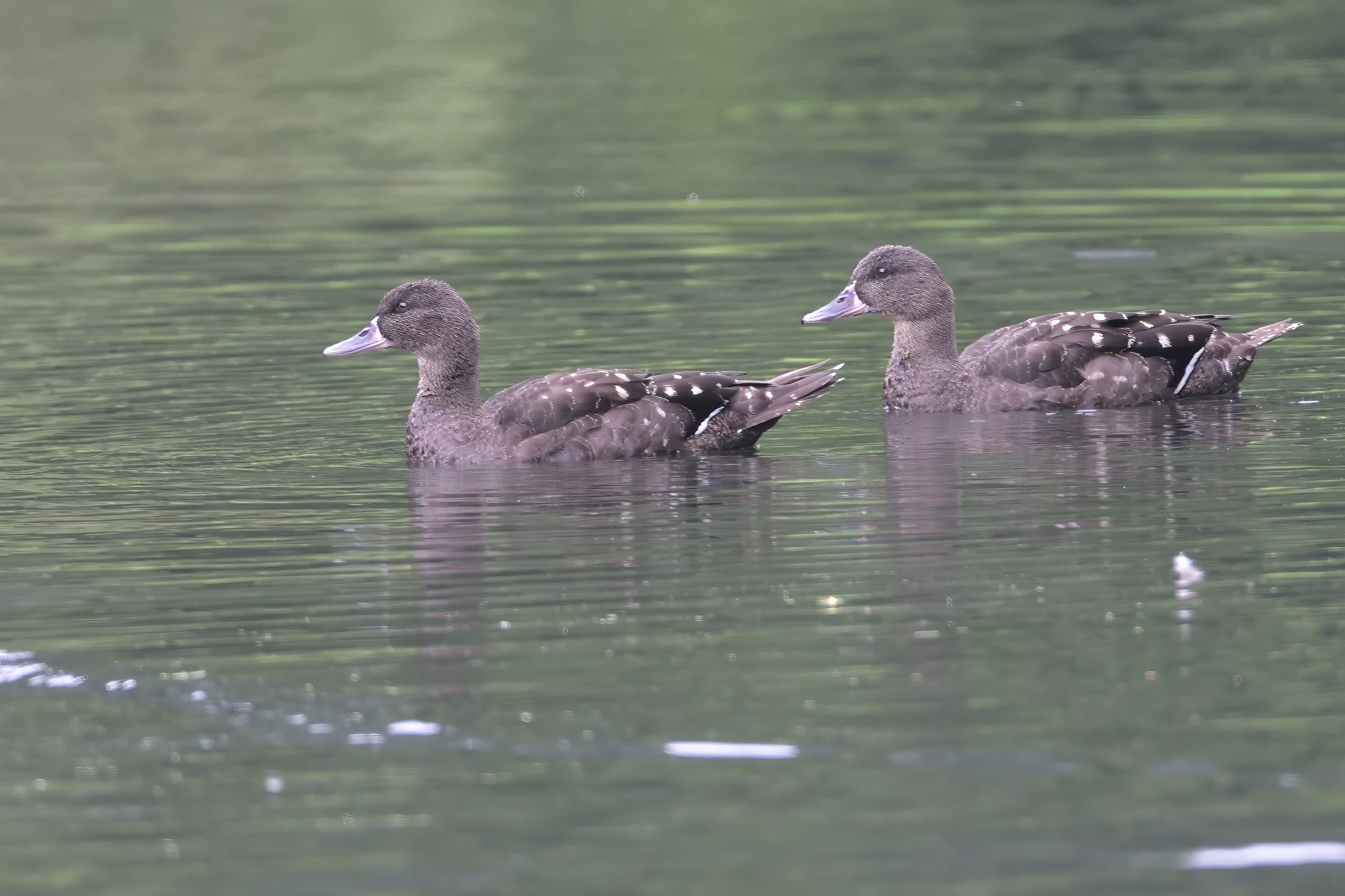
African Black Duck, Anas sparsa
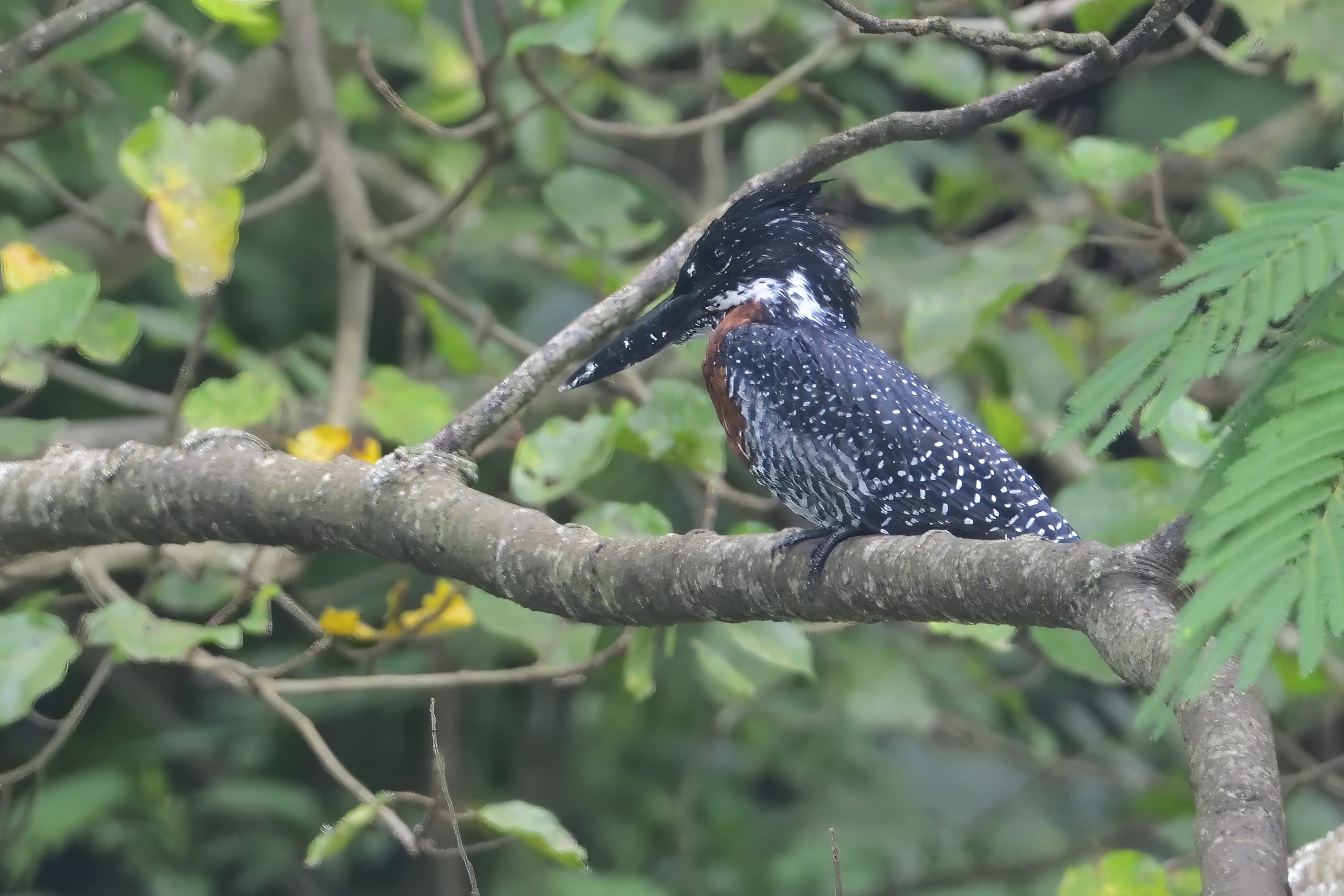
Giant Kingfisher, Megaceryle maxima

Golden-tailed Woodpecker, Campethera abingoni
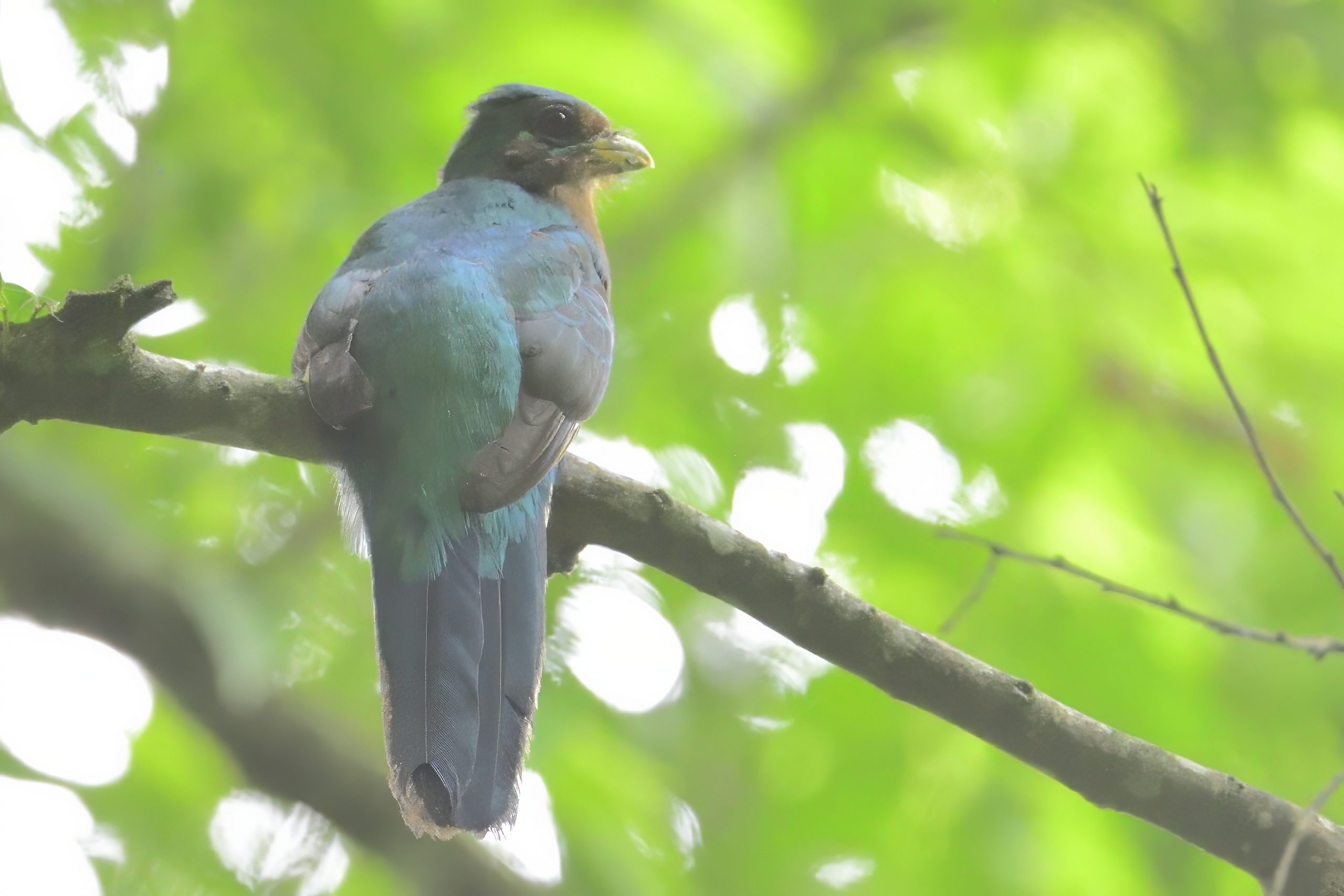
Narina Trogon, Apaloderma narina
Day 14, Wednesday, January 18, 2024: Arusha National Park
We left home around 06:30 and were at the gate at around 07:00. It was partly raining on the way so I were not very optimistic of the outcome of the day trip. We headed as normal towards the museum. We found Scaly Spurfowl everywhere! Some time I have trouble finding this bird, but that day we saw as many as we wanted to see. The only other species added before the museum were Common Buzzard and Red-billed Oxpecker. It were very quiet around the museum and also on both paths on the Ngurdoto Crater rim. The only bird we added were Tambourine Dove and Broad-ringed White-eye. We drove down to the museum again and continued on the road towards the lakes. We picked up Crowned Eagle and African Swamphen. When we came out of the forest towards the lakes, we started picking up more species: Rufous-naped Lark, Short-winged Cisticola, Whinchat and Moustached Grass Warbler. I then looked forward and like a miracle, the clouds departed and for the first time on the trip we could see Mount Kilimanjaro. We continued towards the new picnic area and added Trilling, Singing and Winding Cisticola, White-fronted Bee-eater, Wood Sandpiper, Brown-throated Martin, Cape Teal, Common House Martin, African Sacred Ibis, Three-banded Plover, Blacksmith Lapwing, Grey Crowned Crane and Little Stint. We drove on towards the lakes and picked up Pangani Longclaw, Lesser and Greater Flamingo, Pied Avocet and Ruff. My friends had both Maccoa Duck and Southern Pochard on their target list. We only saw one Southern Pochard! I normally see more than 100 of them? The last bird before we headed towards Mount Meru were an African Pygmy Kingfisher. It were quiet up Mount Meru and we only saw Grey Wagtail and Stripe-faced Greenbul. We stopped at the waterfall and had lunch and took some pictures of Broad-ringed White-eye. Again very quiet on the way down, but we did get a pair of Forest Batis and a pair of Abyssinian Crimsonwings and at the fig tree Moustached Tinkerbird. We drove down to the main road and Joseph needed a call of nature. I stopped the car and we immediately heard and saw quite a huge flock of Red-fronted Parrots. I have never seen them such low altitude in Arusha NP before. The last two birds of the day: African Green Pigeon and Black-backed Puffback. It were a quiet day in Arusha NP, but we managed to get most of Linet and Joseph´s targets. We drove home and did our normal routine.
Some pictures from Day 14:
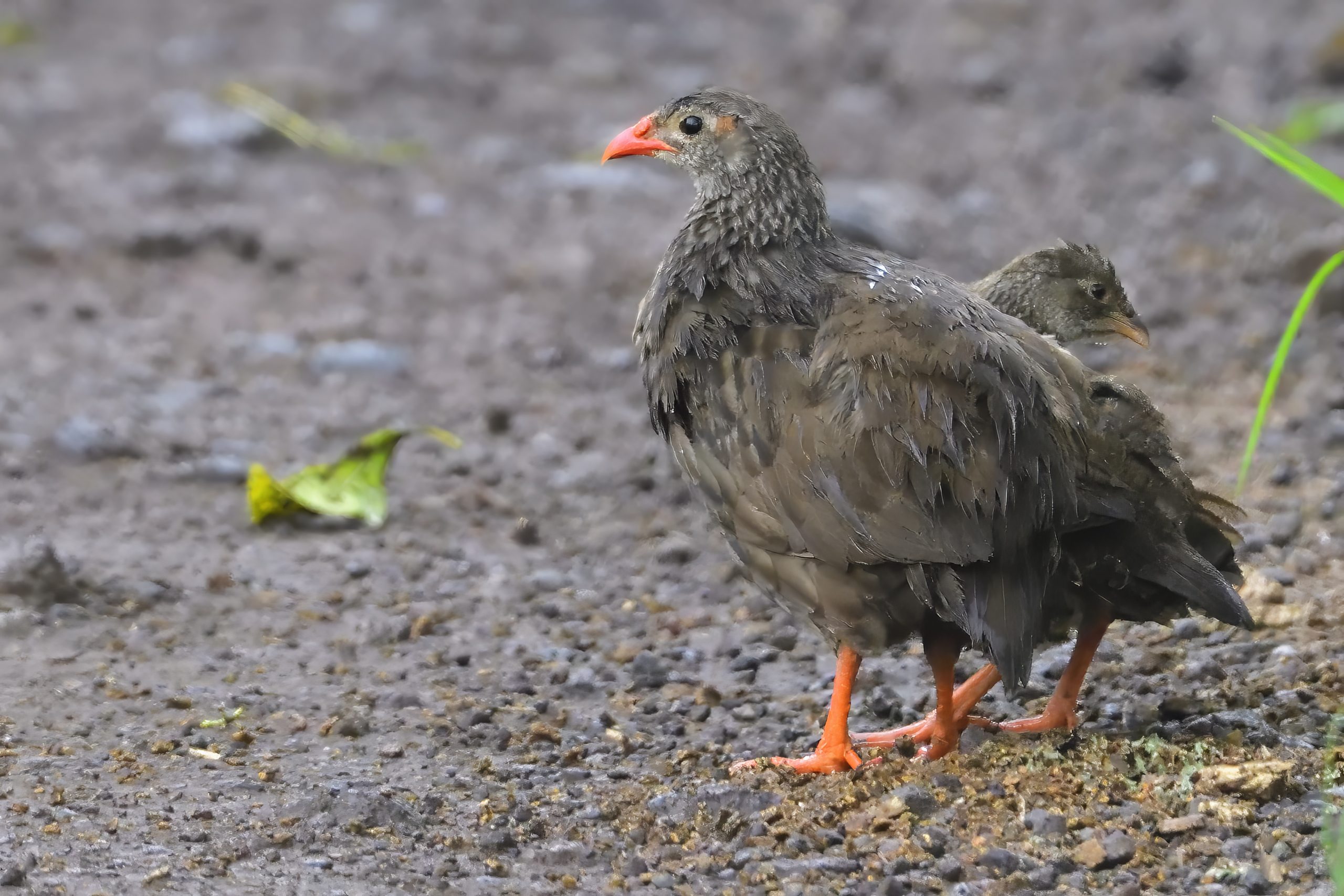
Scaly Spurfowl, Pternistis squamatus

Tambourine Dove, Turtur tympanistra

Rufous-naped Lark, Mirafra africana
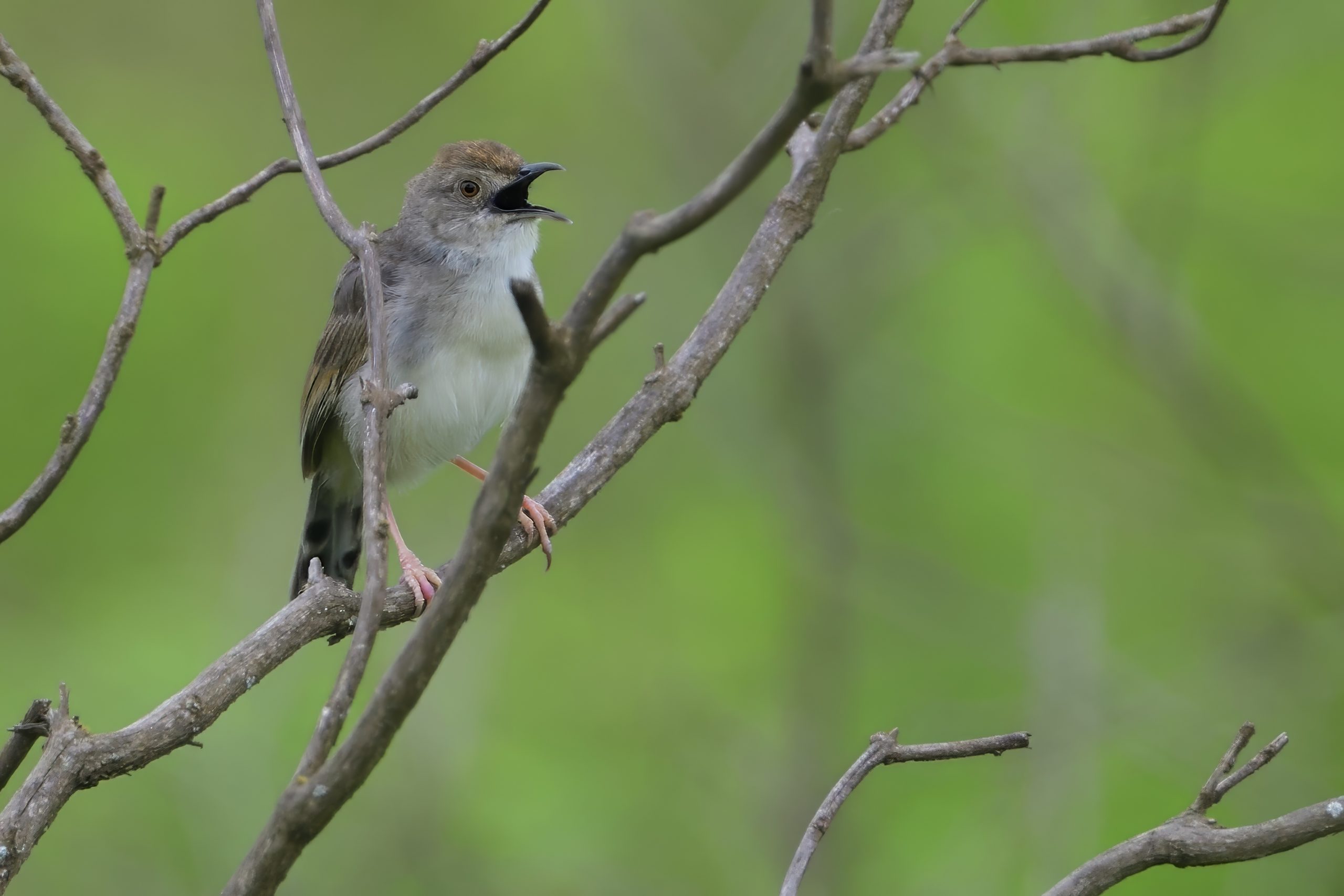
Short-winged Cisticola, Cisticola brachypterus
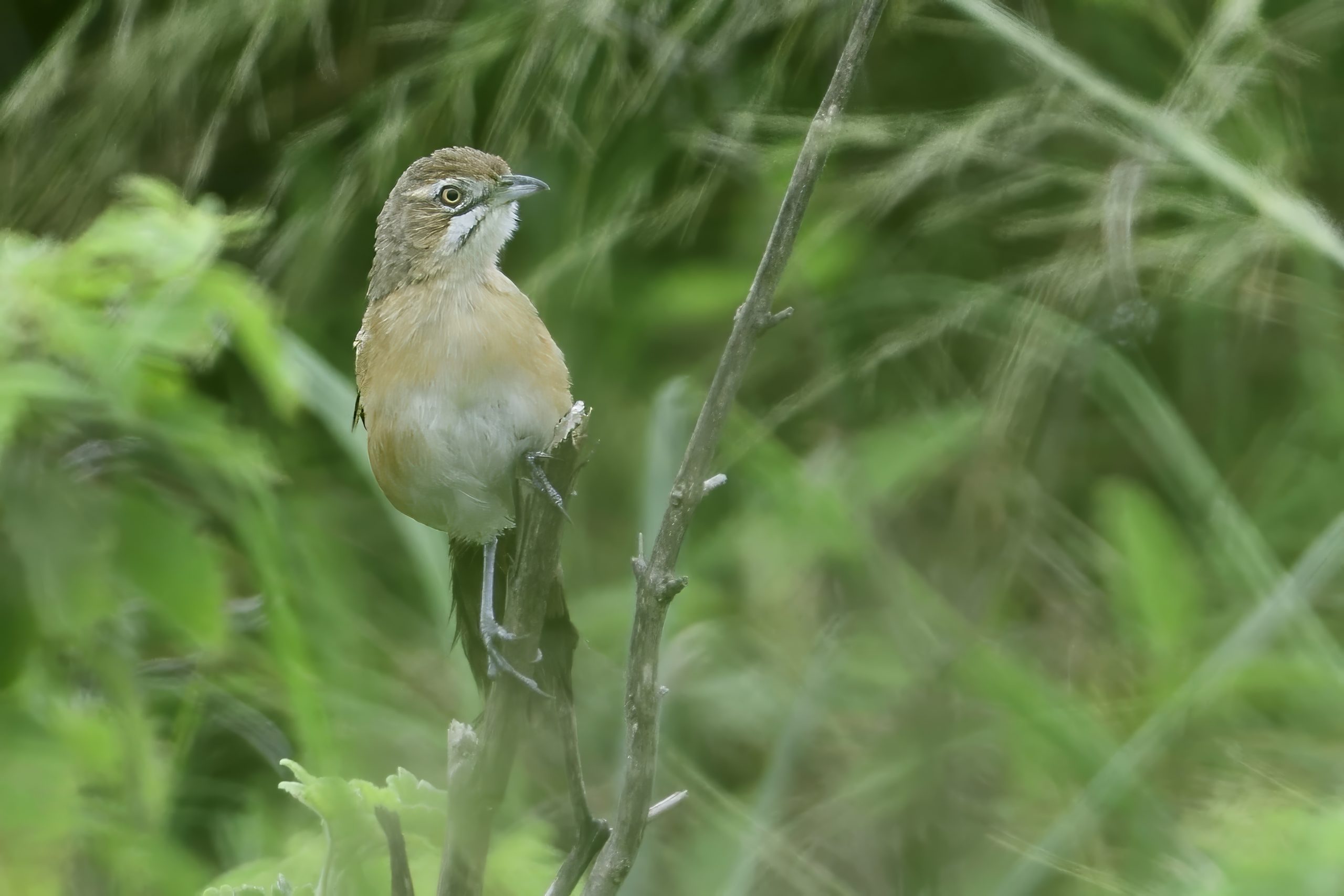
Moustached Grass Warbler, Melocichla mentalis

Whinchat, Saxicola rubetra

Mount Kilimanjaro. Al Gore, you were very wrong! The snow did not melt before year 2000. This is actually Mid Summer here 24 years later 🙂
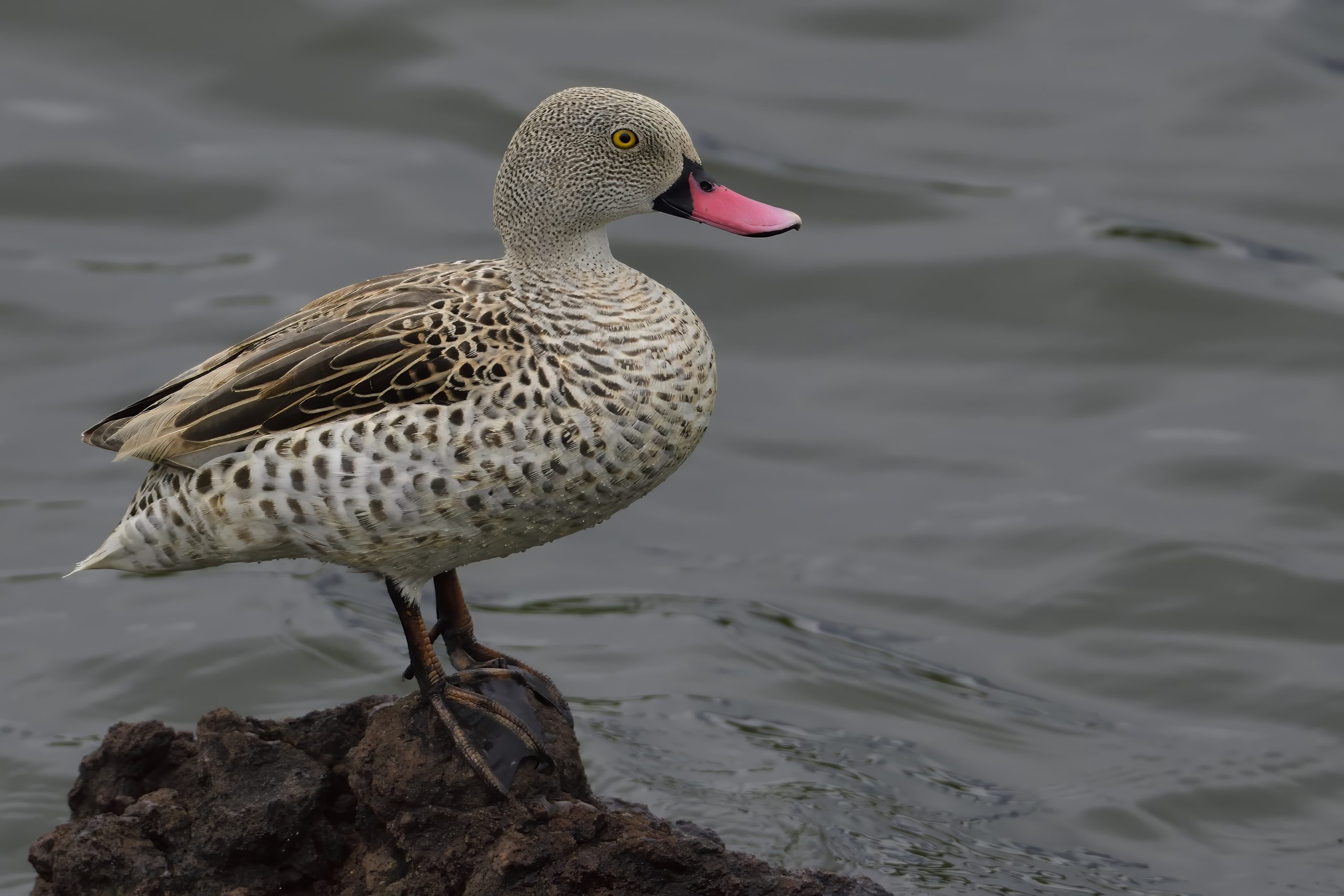
Cape Teal, Anas Capensis
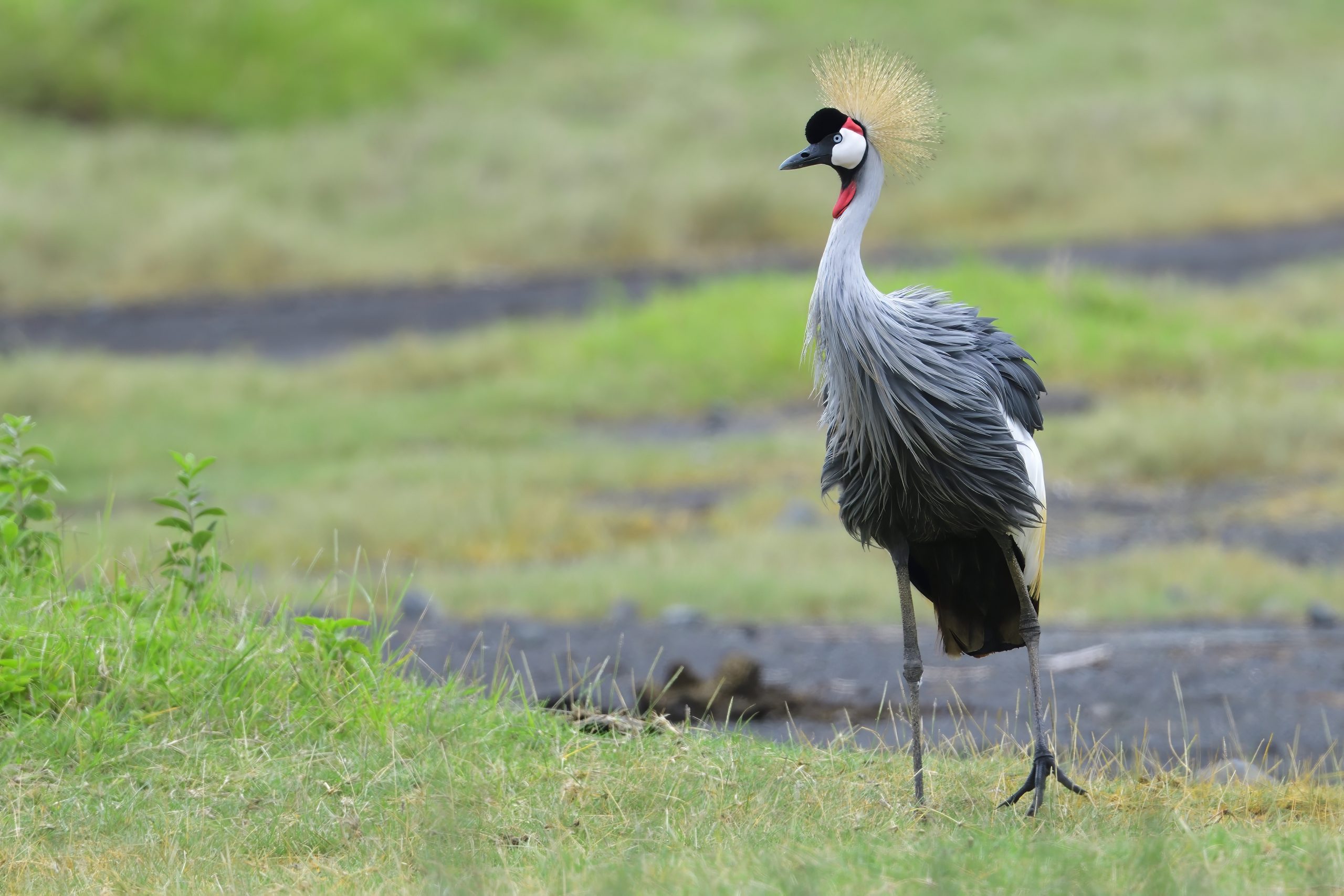
Grey-crowned Crane, Balearica regulorum

Broad-ringed White-eye, Zosterops eurycricotus, Endemic to NE Tanzania

Forest Batis, Batis mixta, Endemic to coastal E Africa

Abysinian Crimsonwing, Cryptospiza salvadori, Endemic to NE Africa
Day 15, Thursday, January 19, 2024: Kiligolf
The trip were actually finished the day before, but my friends had decided to stay on one more day. We took it slow in the morning and had breakfast before we went out. I had a special target in mind: Pallid Honeyguide. Before we got to the Honeyguide, we picked up another common bird on Kiligolf, Buff-bellied Warbler. At the Honeyguide spot, I actually heard them calling. We soon had them in 4 of them. I was very surprised when I saw Joe taking picture of a bat instead :-). It turned out that he had seen the bird before, but not Linet. Anyway, I were happy we found them. We returned home and I took picture of a Juvenile Red-chested Cuckoo in my garden. We were supposed to go out in the afternoon, but some rain put a stop to that plan. Instead we just relaxed and watched the birds in my garden where we added Yellow-bellied Greenbul to our list.

Pallid Honeyguide, Indicator meliphilus
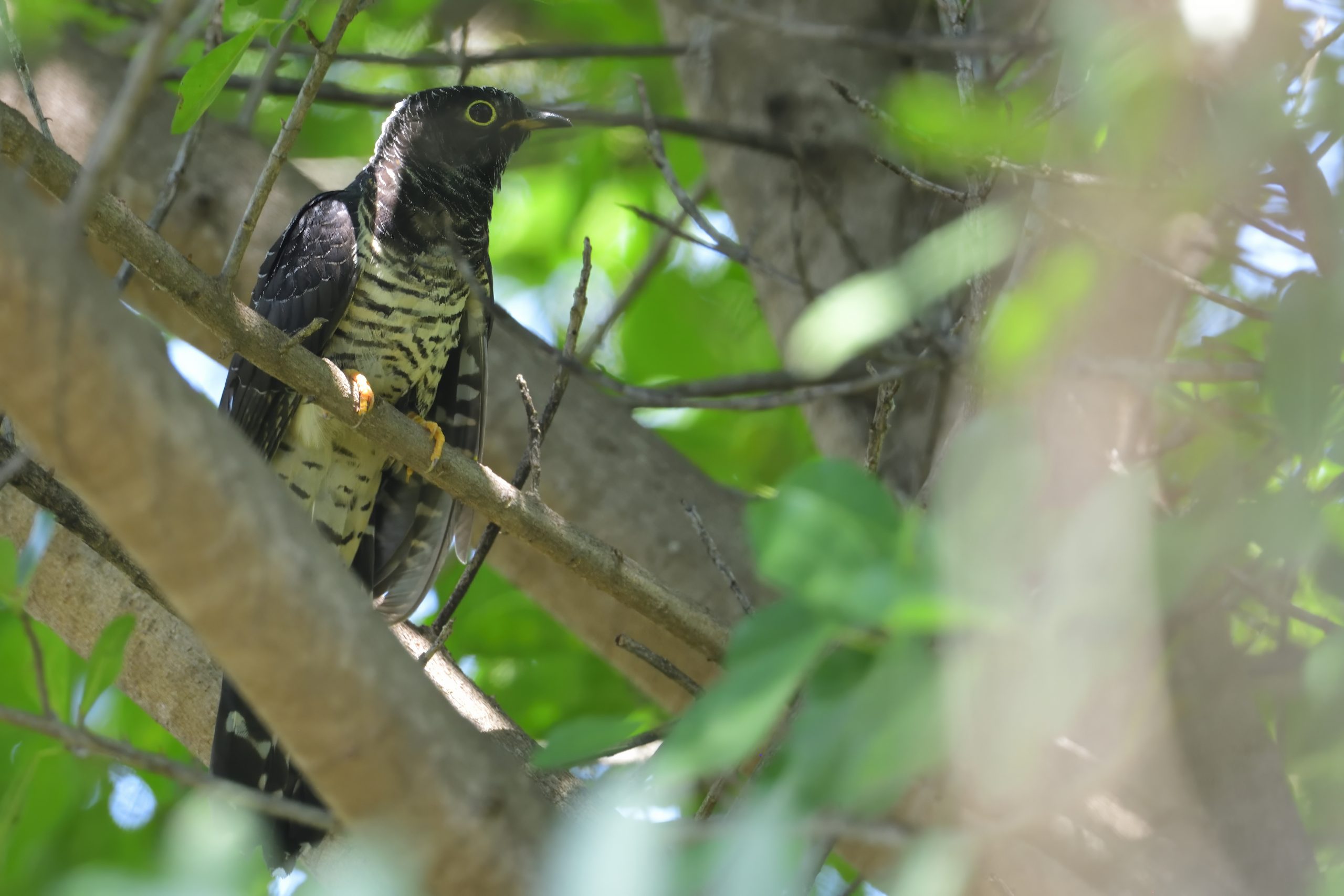
Red-chested Cuckoo, Juvenile, Cuculus solitarius
Day 16, Friday, January 20, 2024: My home – Arusha
Linet and Joe took the bus back to Nairobi. I dropped them at Riverside Shuttle at 07:30
We ended the trip with a total of 397 birds. This is a little low for my liking. One of the reason were of course that both Linet and Joe had a lot of the birds on my trip already from their extensive travels in Kenya, so many birds we did not even go after. Joe ended up with low 60 lifers while Linet ended up in the high 60´s. My frustration were that we dipped on quite a few birds I always take as granted. The weather were very unseasonal since January should be between the short and the long rains. I guess, birding is birding. I am already starting a new trip tomorrow so stay tuned for a new trip report.